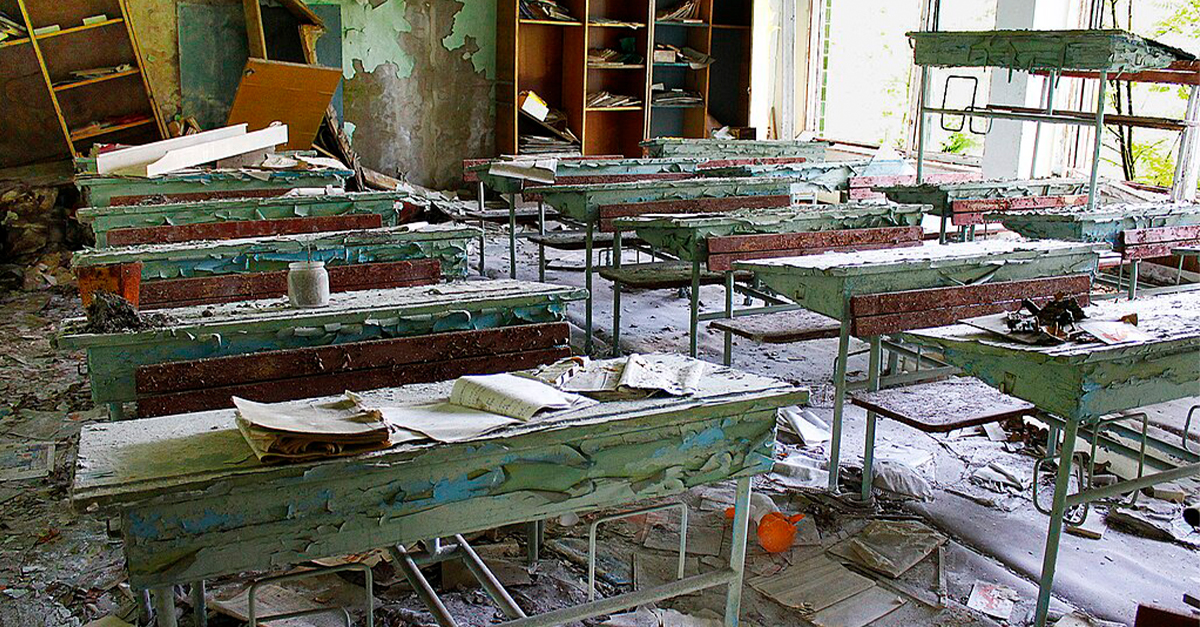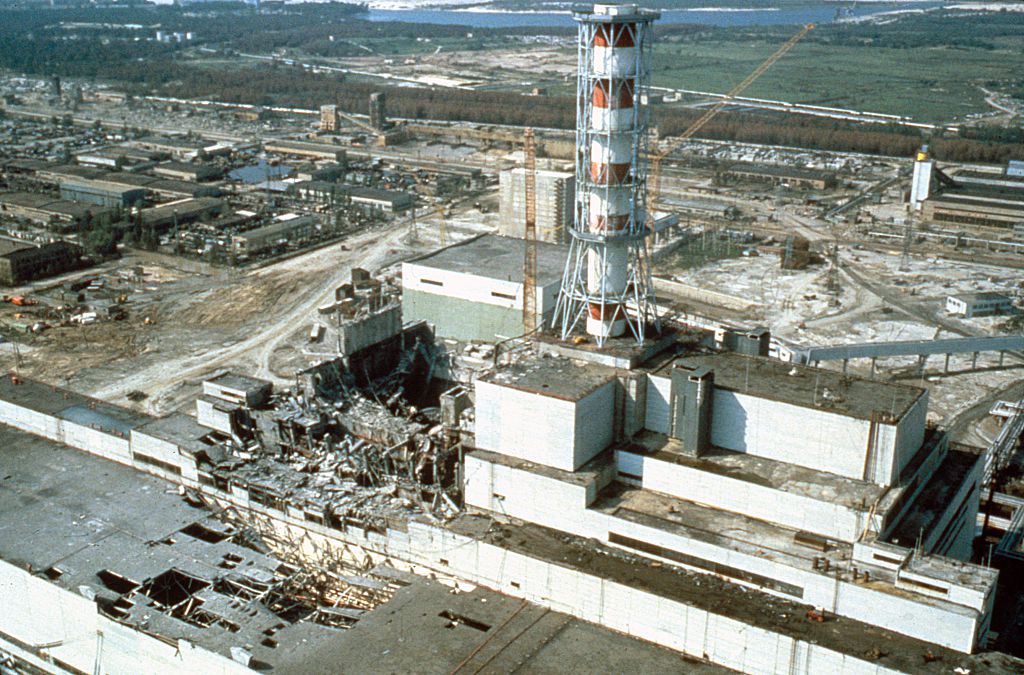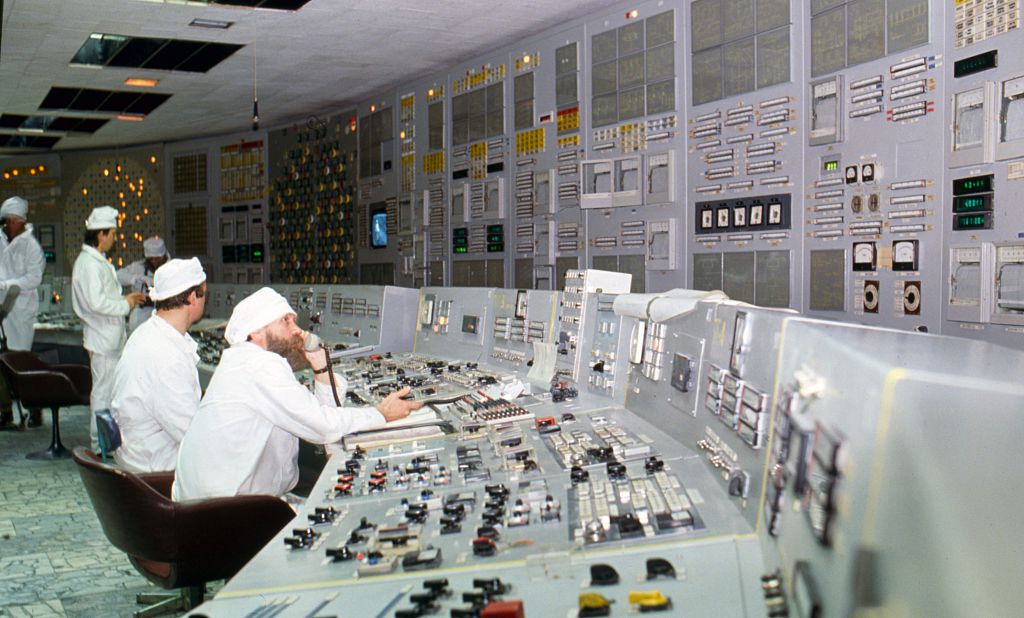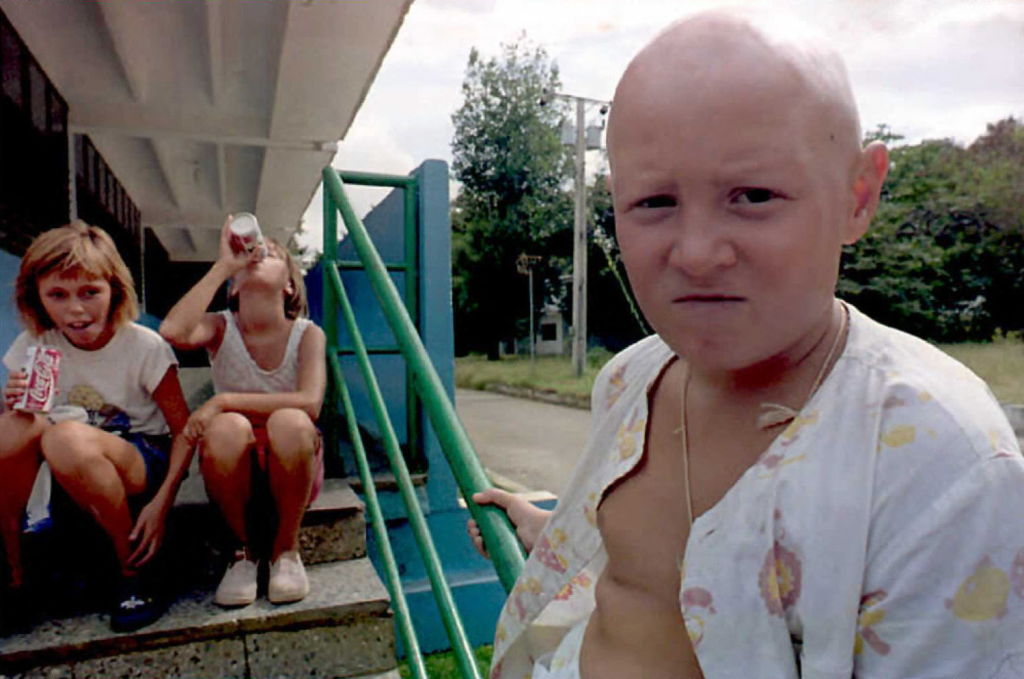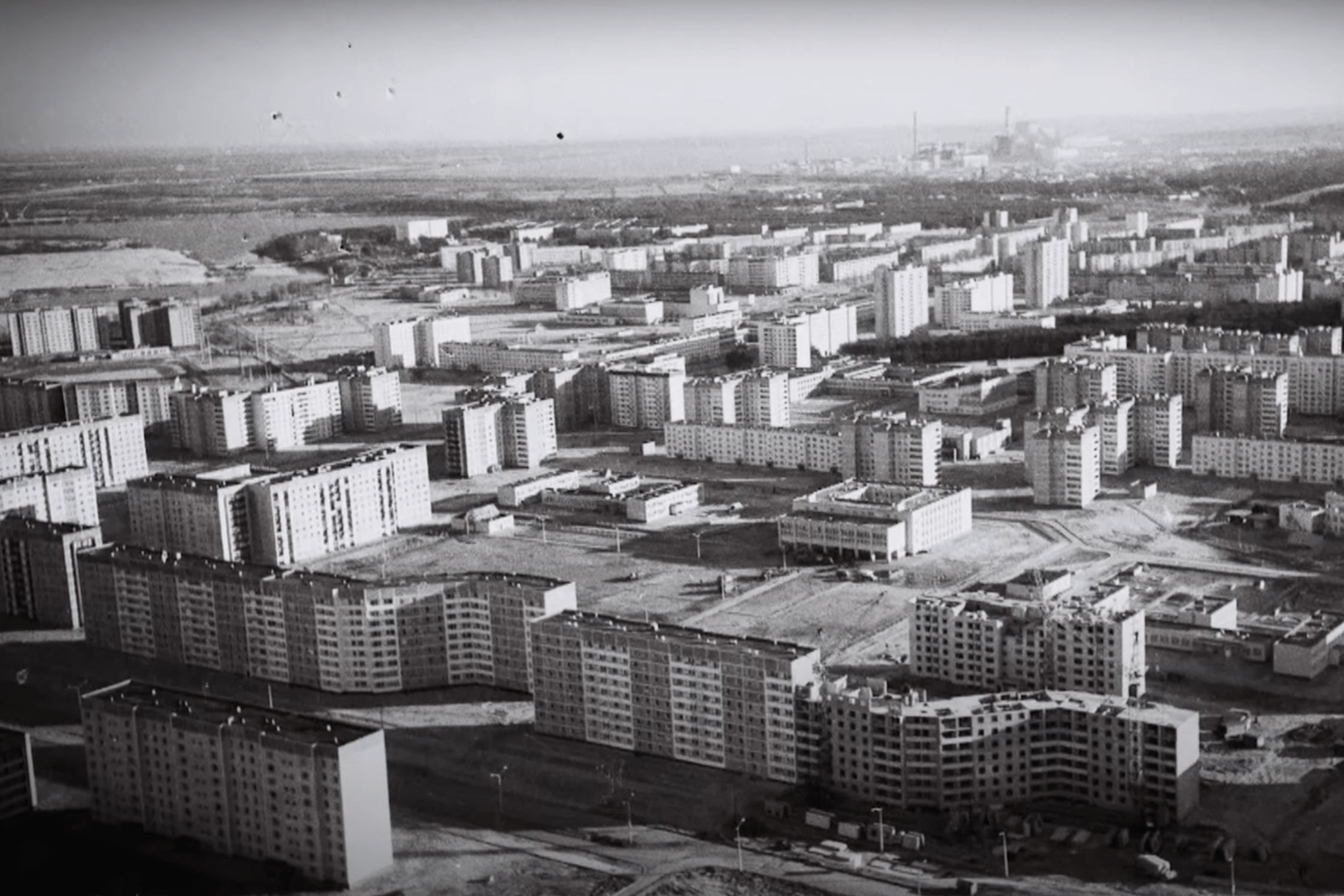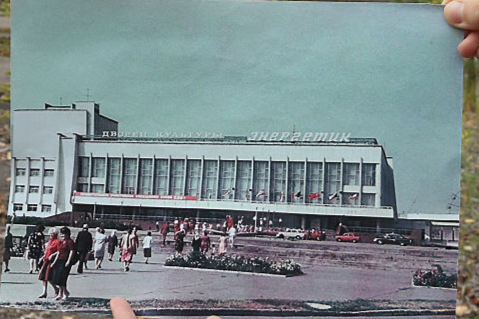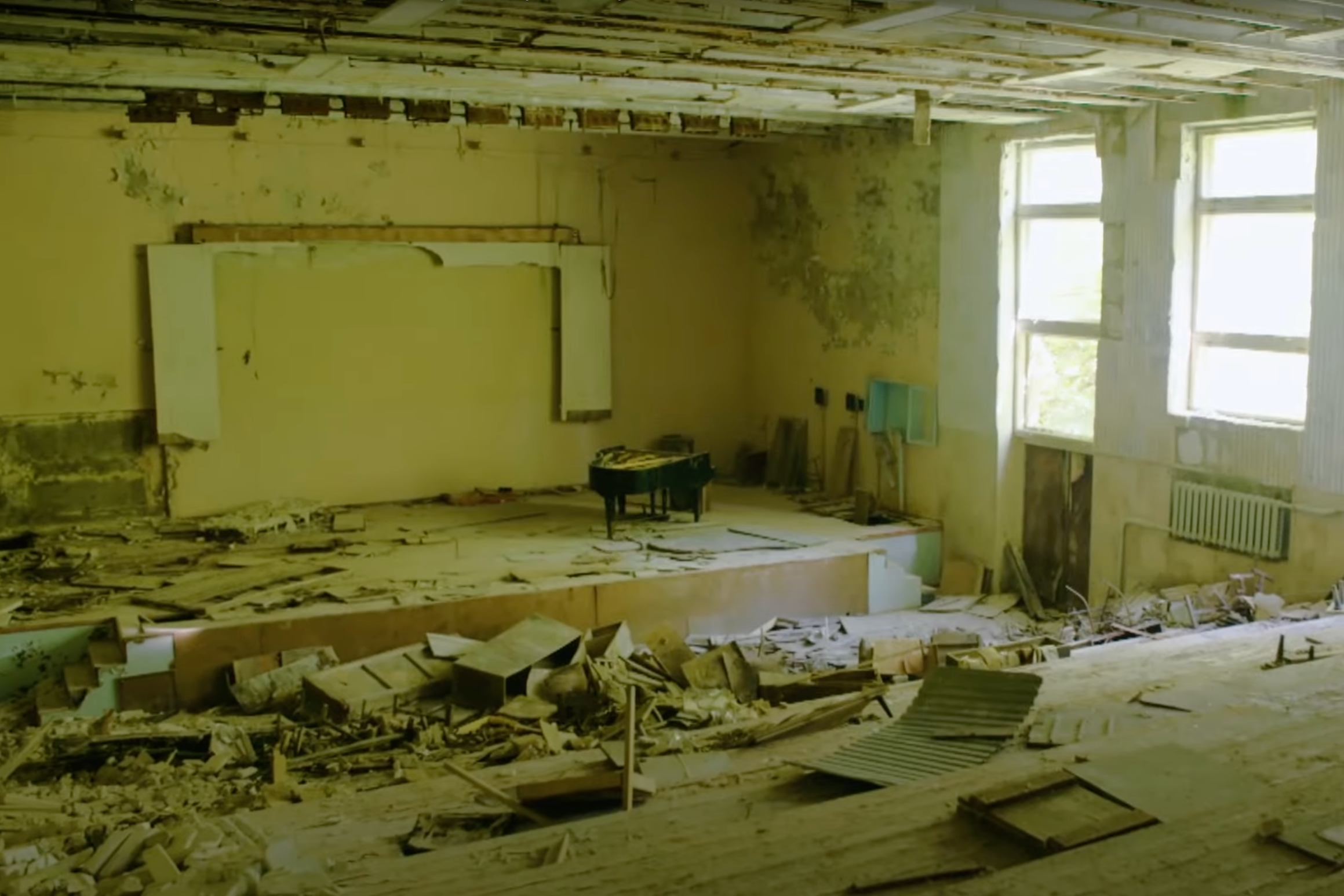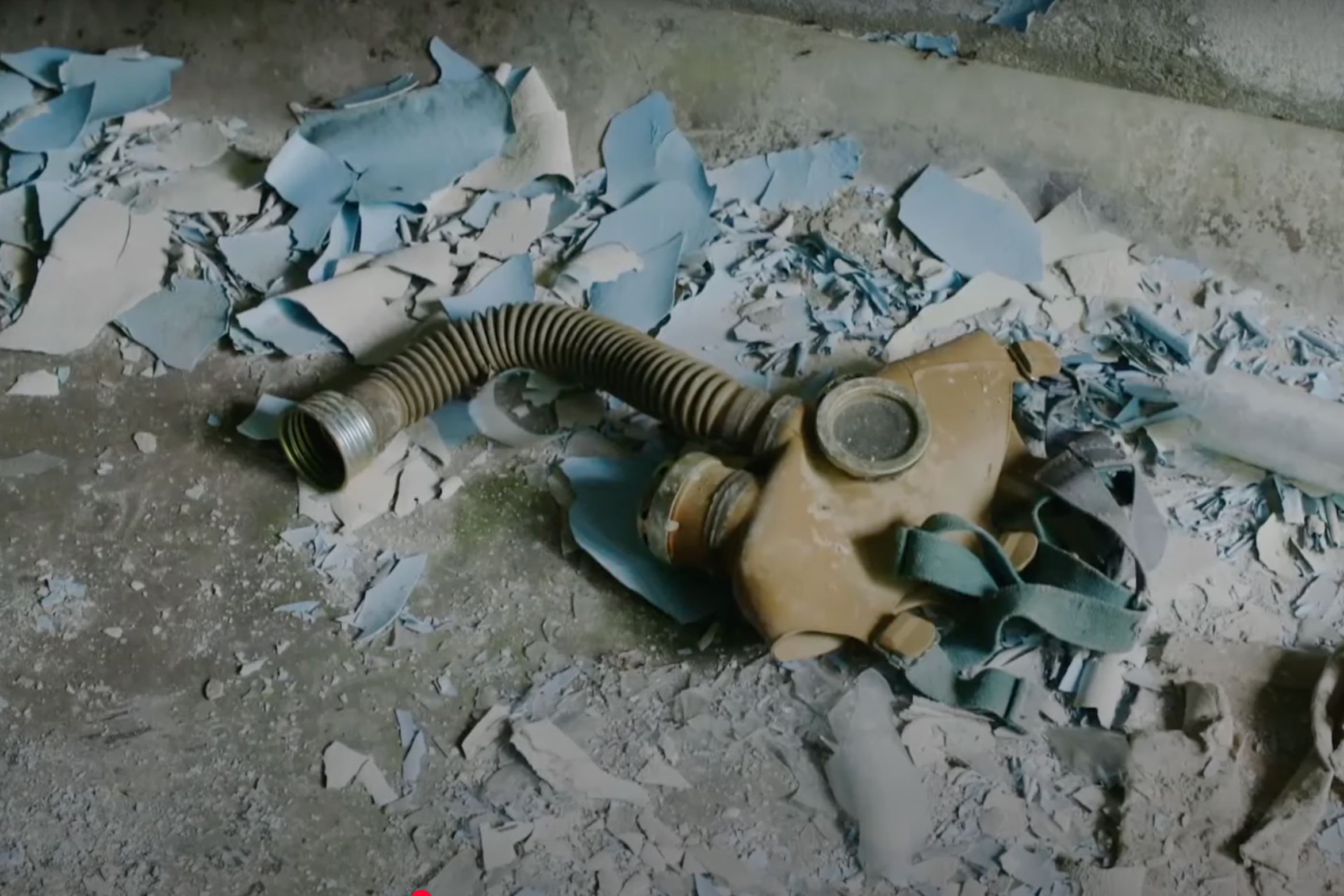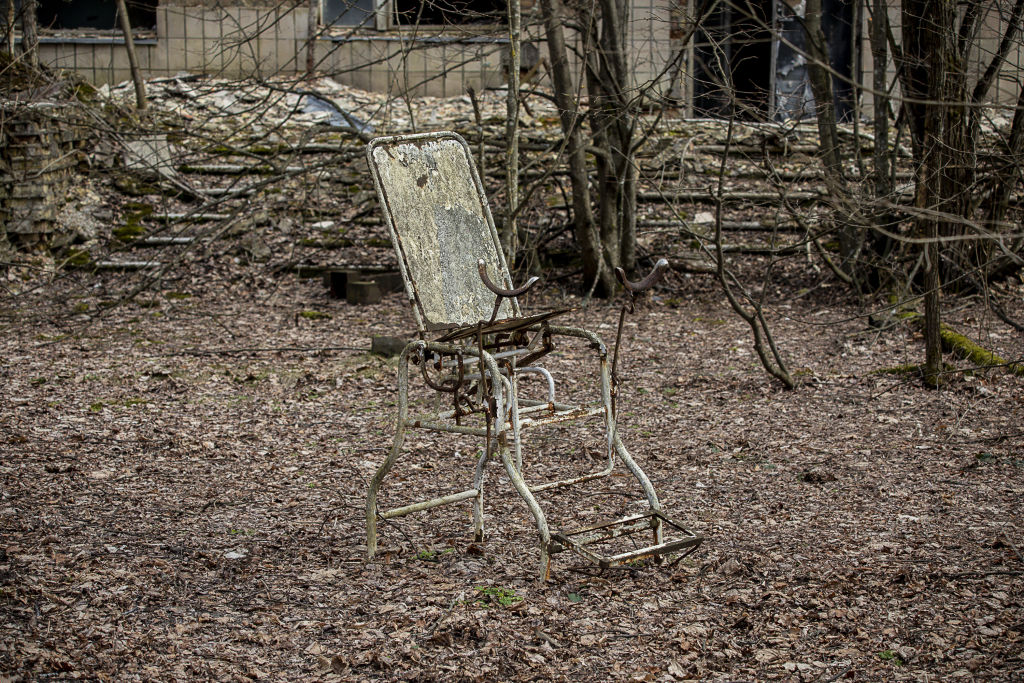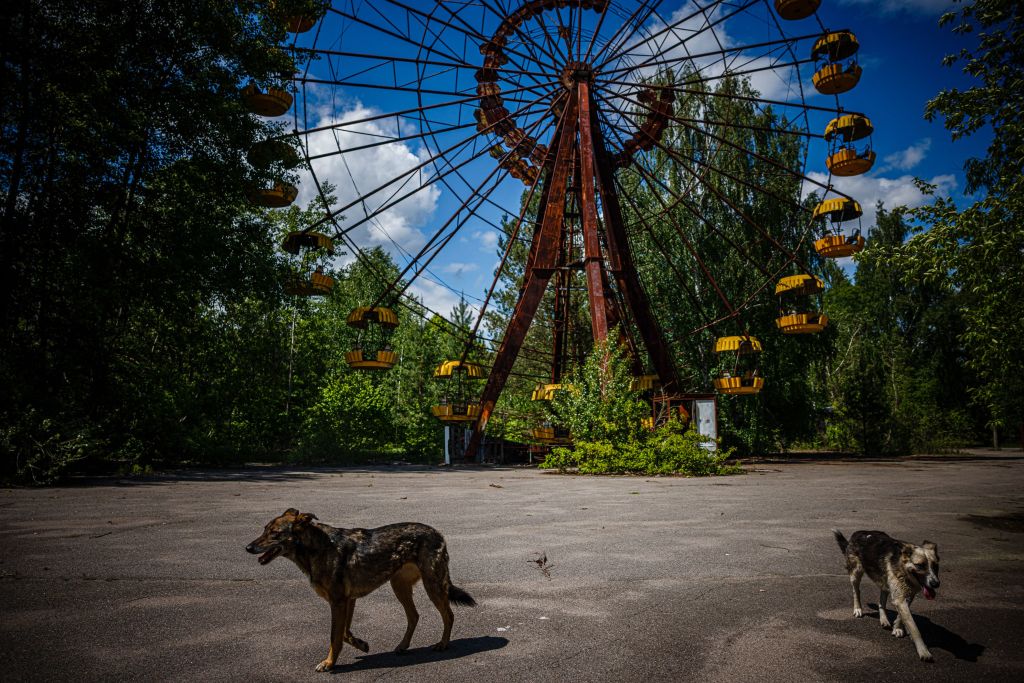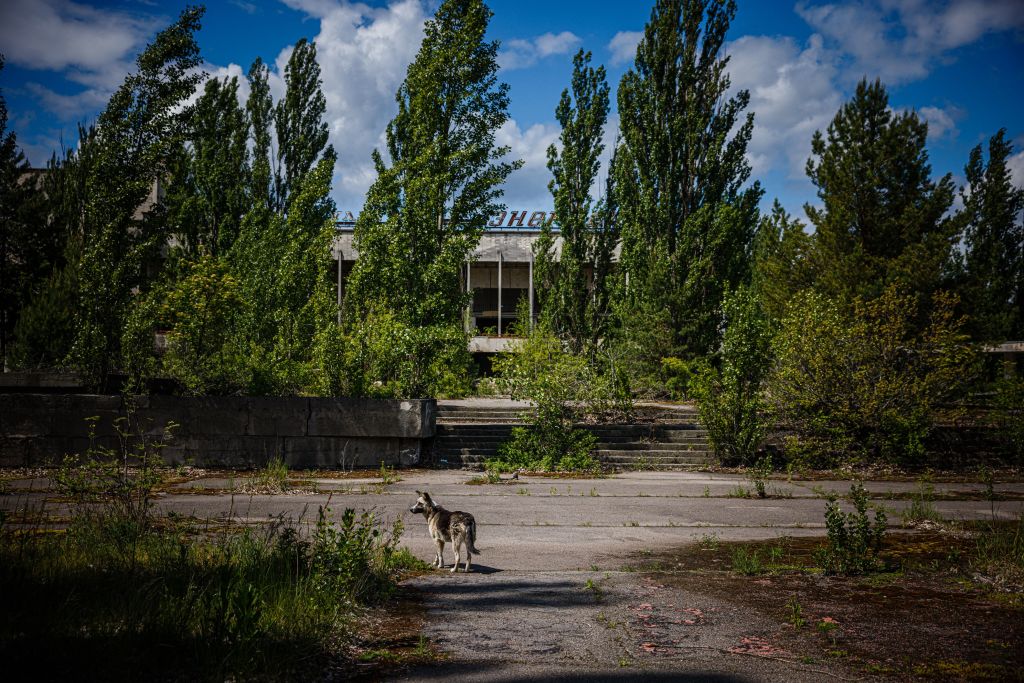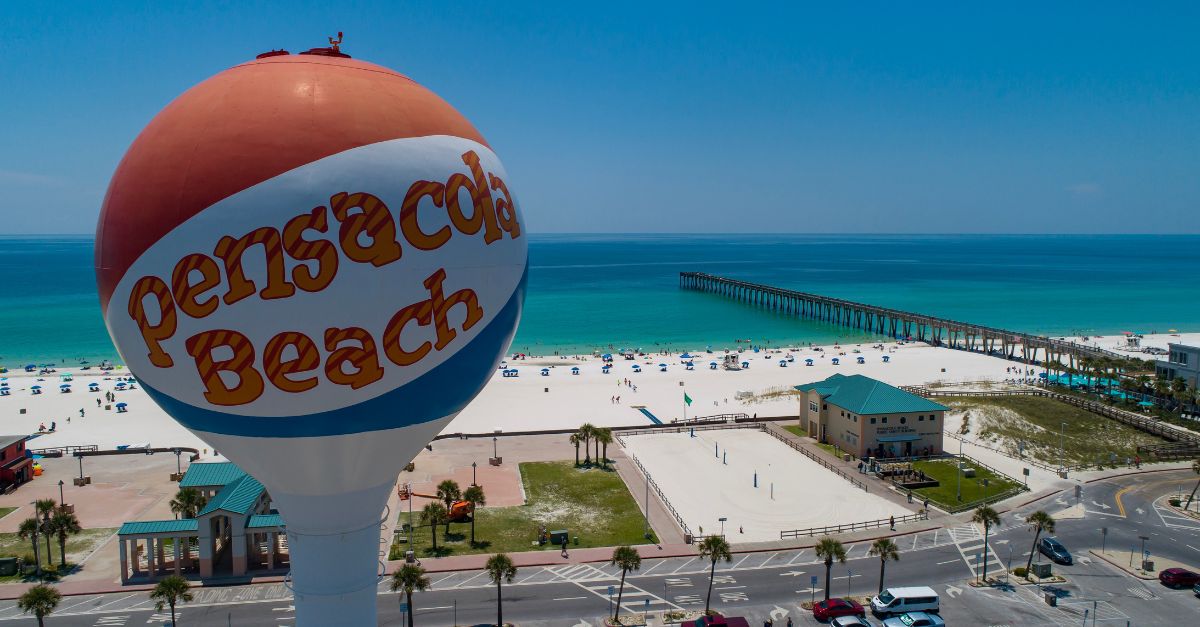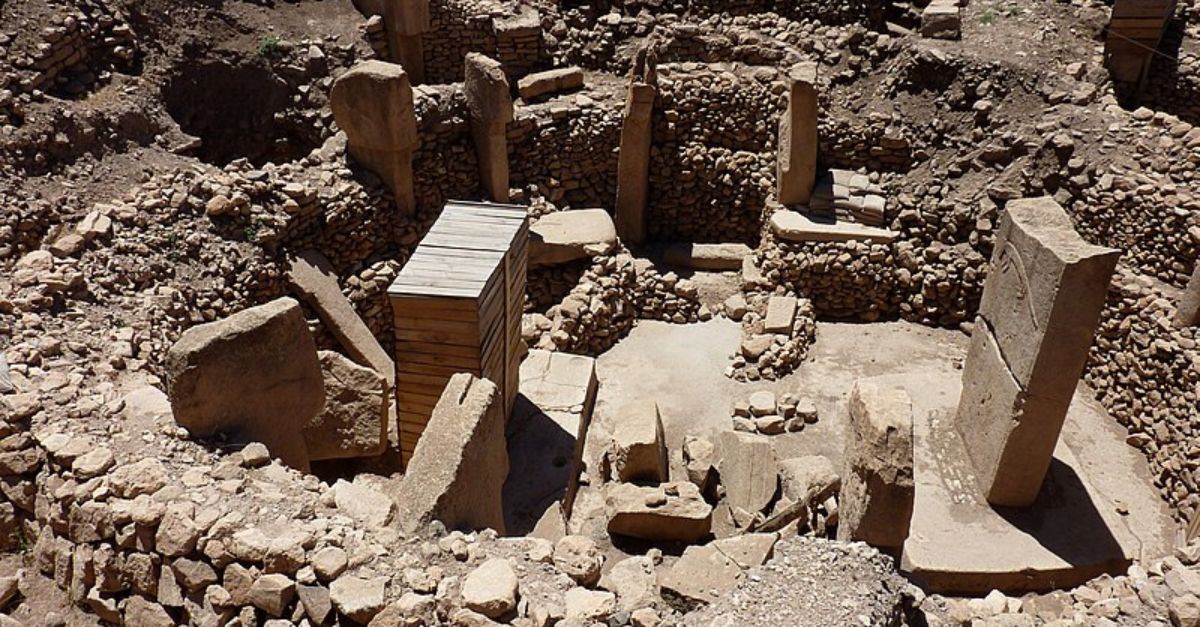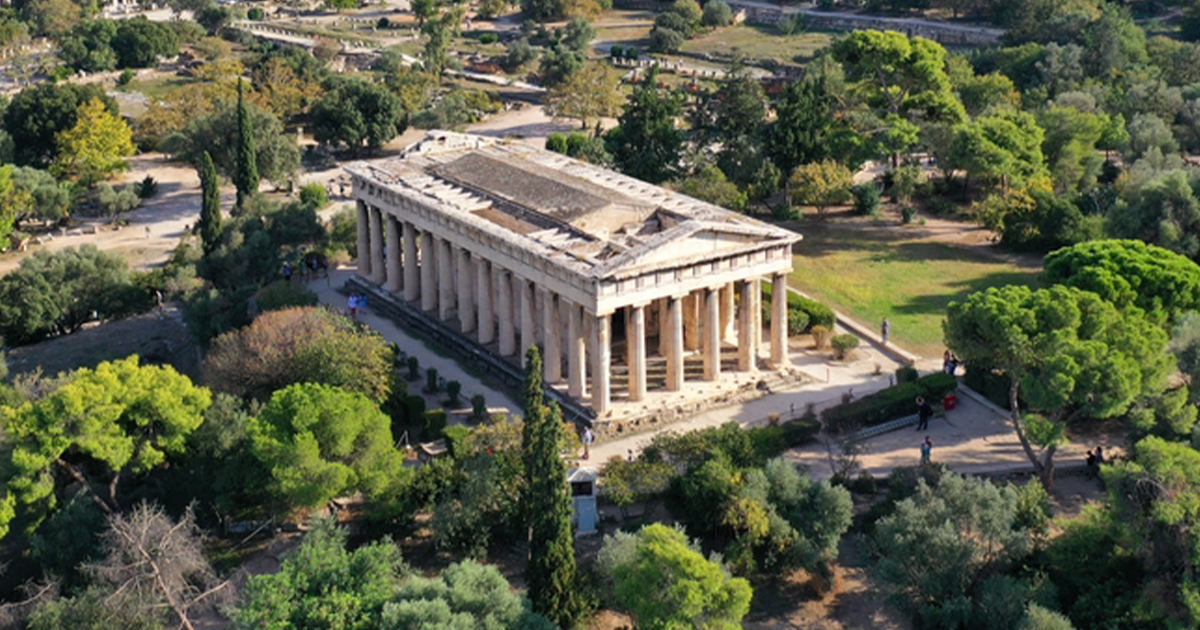An Abandoned Radioactive Site: Chernobyl
On April 26, 1986, the number 4 reactor at the Chernobyl Nuclear Power Plant in Northern Ukraine exploded. It is still the worst nuclear disaster in human history. The legacy it left on the surrounding areas was nearly unfathomable—and must be seen in pictures to be believed.

Where It Happened
Although the resulting radiation from the Chernobyl explosion affected far-reaching areas, the two sites hurt most were the area of Chernobyl itself and the nearby city of Pripyat. This photo shows the Chernobyl Nuclear Power plant, including the charred remains of reactor number 4.
How It Happened
The Chernobyl disaster was an instance of tragic irony: At the time, the plant's engineers—shown in this photo just after the disaster—were running a safety simulation to test how to cool the reactor in blackout conditions.
However, in trying to get the data they wanted, they pushed reactor number 4 too hard and too fast, leading to the explosion. The fallout was unimaginable.
The Children Who Were Victims
In this photo, 12-year-old Yura Kudriaske, one of Chernobyl's victims, waits at a children's hospital to receive treatment.
Today, both Chernobyl and the nearby Pripyat are almost completely abandoned. Radiation sickness can involve nausea and vomiting, hair loss, and fever, among other symptoms. It can also cause fetal deformities and promote cancers.
Chernobyl Versus Pripyat
Chernobyl itself was quite small, without only 14,000 residents. The nearby Pripyat, shown here before the explosion, was located about a 25-minute drive northwest of Chernobyl. It was also far bigger, with just under 50,000 people living there before that fateful day.
Now Ghost Towns
Both Chernobyl and Pripyat are now almost completely abandoned. Chernobyl today has somewhere around 500 residents according to estimates, many of them likely tourist guides, while Pripyat's population is officially "none".
 Chernobyl's Adjacent Ghost City: Pripyat, Science Channel
Chernobyl's Adjacent Ghost City: Pripyat, Science Channel
The Abandoned Schools
Many people had to up and leave their lives in an instant, and there are traces of them all over Chernobyl and Pripyat. This school in Pripyat, Middle School #3, still has all the desks and bookshelves it once had, but they are now crumbling with weather and age.
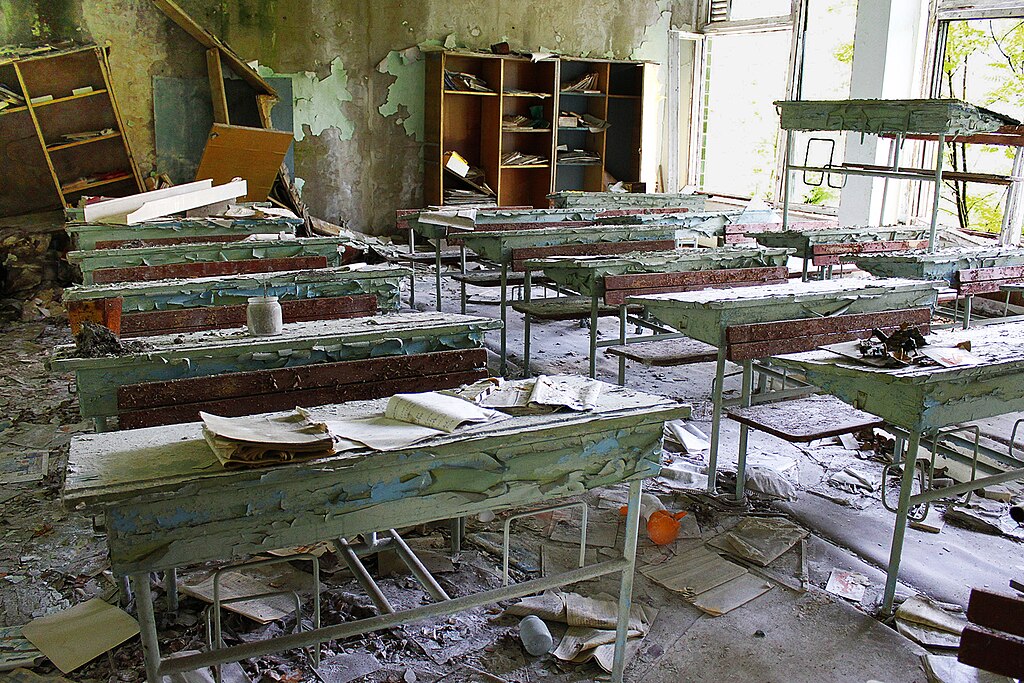 Shanomag, CC BY-SA 4.0, Wikimedia Commons
Shanomag, CC BY-SA 4.0, Wikimedia Commons
A Hospital Maternity Ward
Every facet of life in Pripyat and Chernobyl was lost in nearly the blink of an eye. Here, rusted, dirty baby cribs from a hospital maternity ward sit in a room full of peeling paint and leftover radiation.
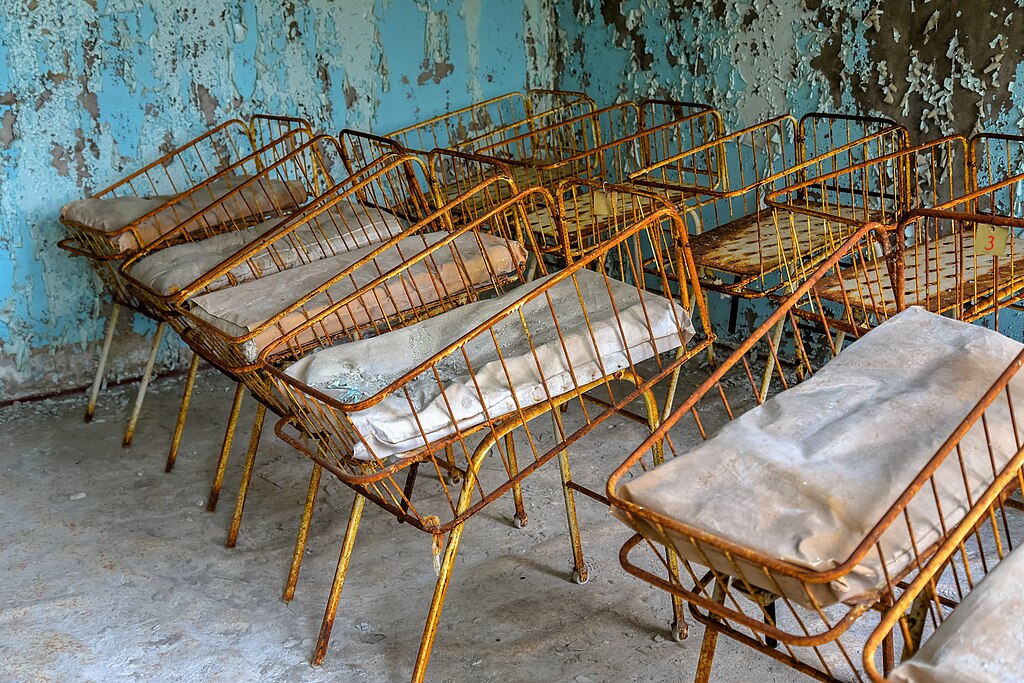 Jorge Franganillo from Barcelona, Spain, CC BY 2.0, Wikimedia Commons
Jorge Franganillo from Barcelona, Spain, CC BY 2.0, Wikimedia Commons
An Old Gym
A gym in Pripyat has barely any identifying features left. With the stripped walls and destroyed floor, one of the only things still semi intact is the old basketball backboard.
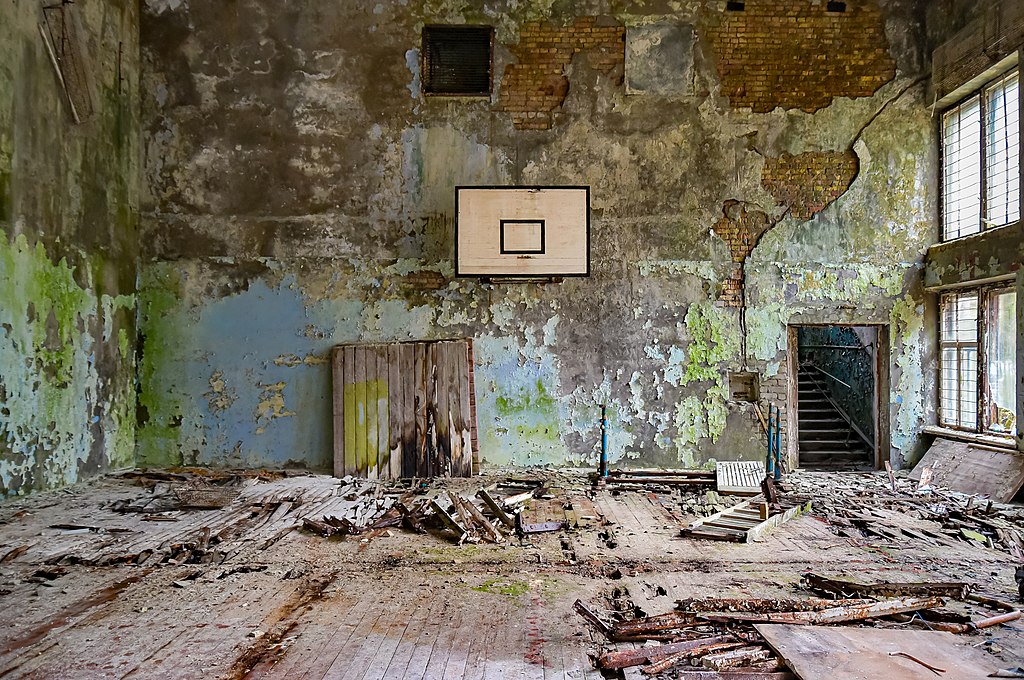 Jorge Franganillo, CC BY 2.0, Wikimedia Commons
Jorge Franganillo, CC BY 2.0, Wikimedia Commons
The Old Community Center
Even Pripyat's community center, which would have been full and central to life in the town, was ravaged. The ceiling is no more, and bookshelves and other furniture are going to seed.
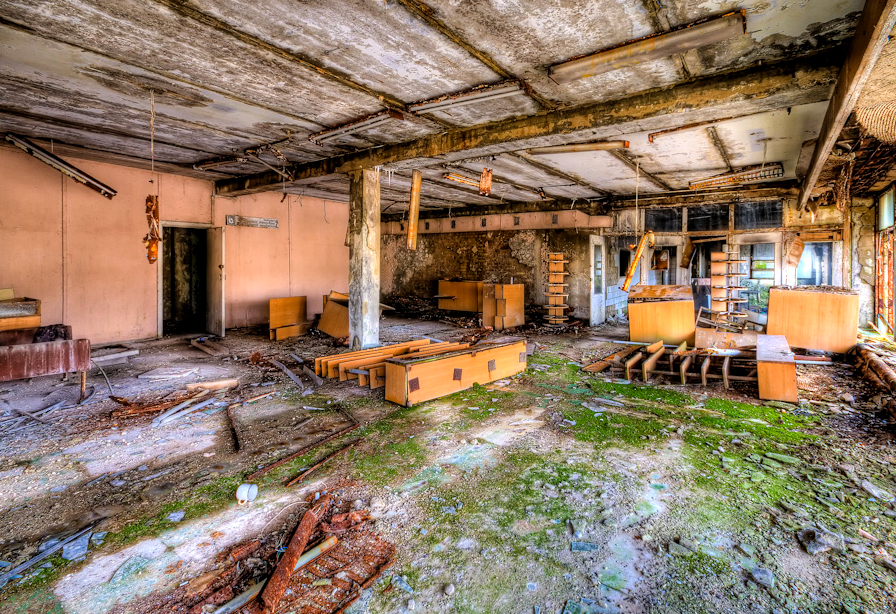 Timm Suess from Basel, Switzerland, CC BY-SA 2.0, Wikimedia Commons
Timm Suess from Basel, Switzerland, CC BY-SA 2.0, Wikimedia Commons
A Medical Examination Room
Another image from the hospital shows how powerless everyone, even doctors and nurses, were to stop the destruction. In this room, a medical chair lies disused among rubble.
 Jorge Franganillo from Barcelona, Spain, CC BY 2.0, Wikimedia Commons
Jorge Franganillo from Barcelona, Spain, CC BY 2.0, Wikimedia Commons
A Waiting Room
The devastation in both cities is unimaginable, and entire buildings had to be abandoned. In this photo, the remnants of an apparent waiting room sit in rubble.
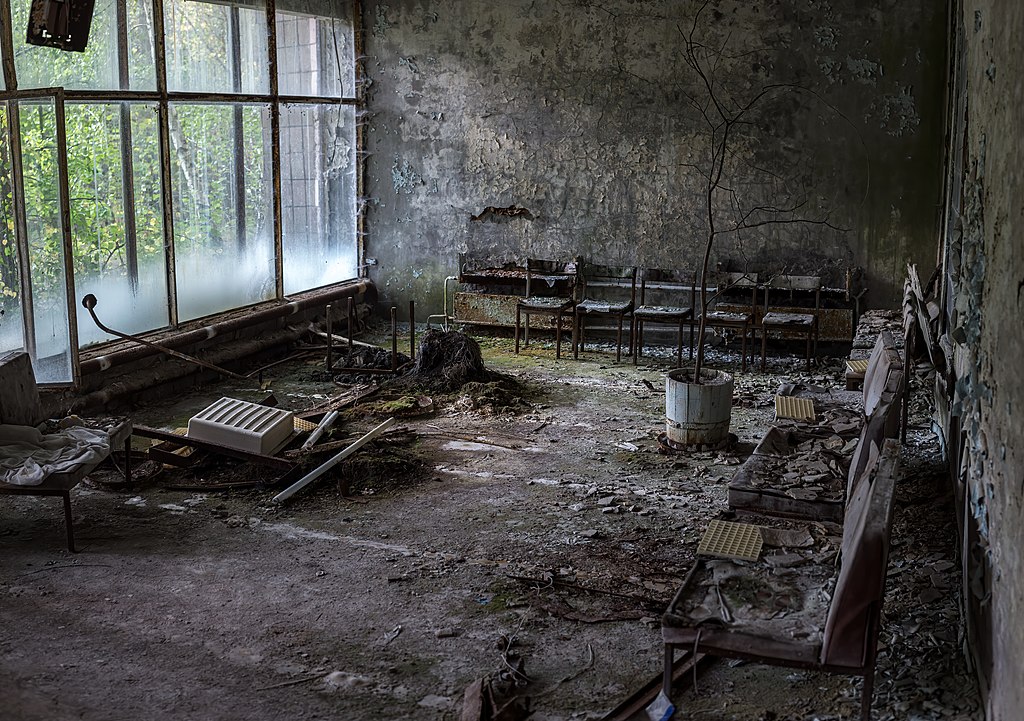 Wendelin Jacober from Luzern, Schweiz, CC0, Wikimedia Commons
Wendelin Jacober from Luzern, Schweiz, CC0, Wikimedia Commons
The Polissya Hotel Before
One of the biggest landmarks in Pripyat was the Polissya hotel, which was one of the largest hotels for miles around. After the disaster, though, it became so much more than that. It housed many of the scientific commissioners who came to study Chernobyl in the coming months.
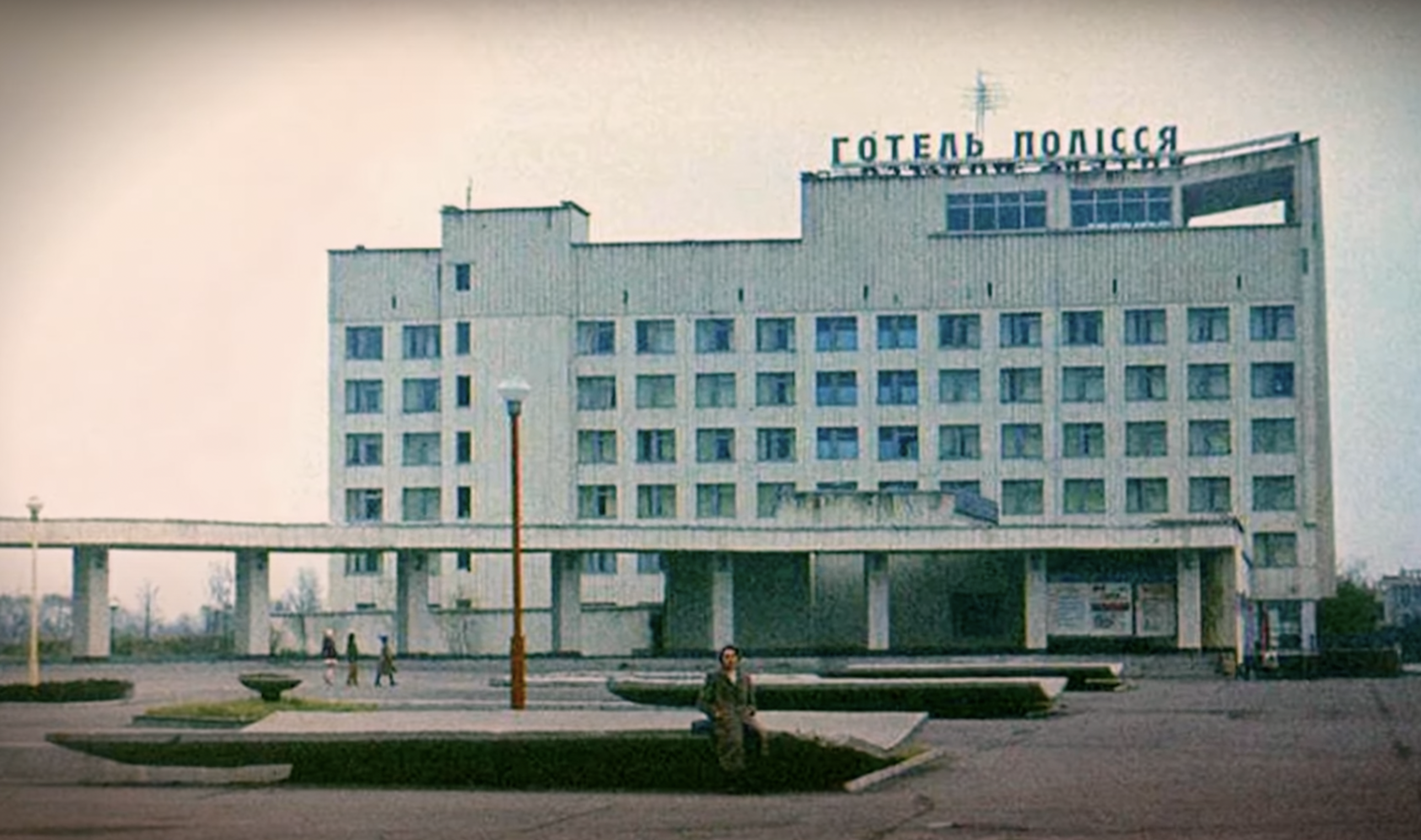 Chernobyl's Adjacent Ghost City: Pripyat, Science Channel
Chernobyl's Adjacent Ghost City: Pripyat, Science Channel
The Polissya Hotel After
Today, however, like so much of Pripyat, the Poliyssa Hotel is little more than a ruin. Its windows are almost all blown out, its sign is crumbling, and the foliage around it is overgrown.
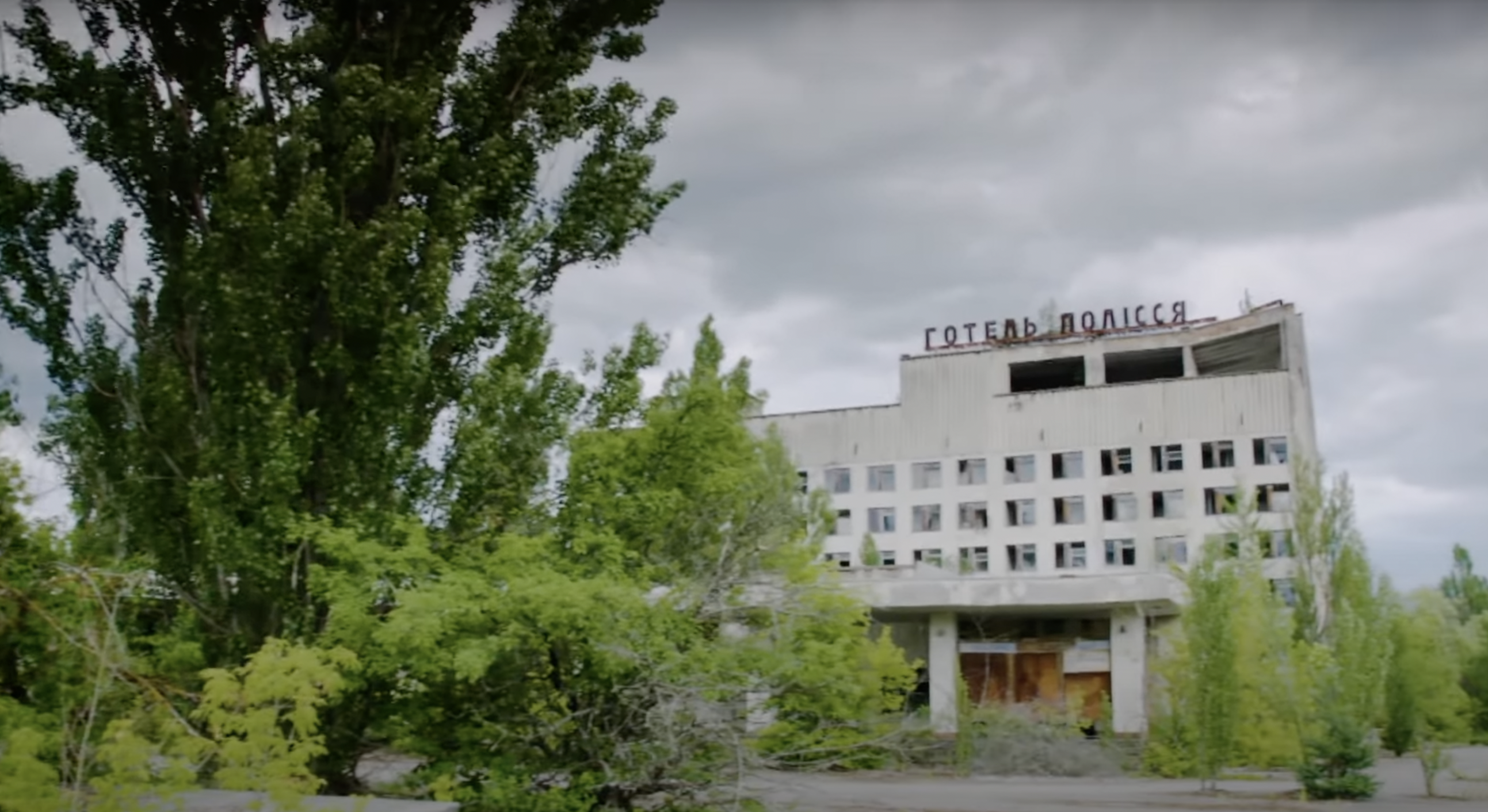 Chernobyl's Adjacent Ghost City: Pripyat, Science Channel
Chernobyl's Adjacent Ghost City: Pripyat, Science Channel
Bumper Cars Before
There were some amusement edifices in and around Chernobyl and Pripyat, where families would go to enjoy themselves. One of the most popular attractions was the bumper car arena.
This photo was taken just after the disaster, but shows the cars in relatively good condition. They wouldn't stay this way.
 Pascal J Le Segretain, Getty Images
Pascal J Le Segretain, Getty Images
Bumper Cars After
Today, the bumper cars are all but destroyed, their paint thinning and faded and the metal around them falling to rusty scraps.
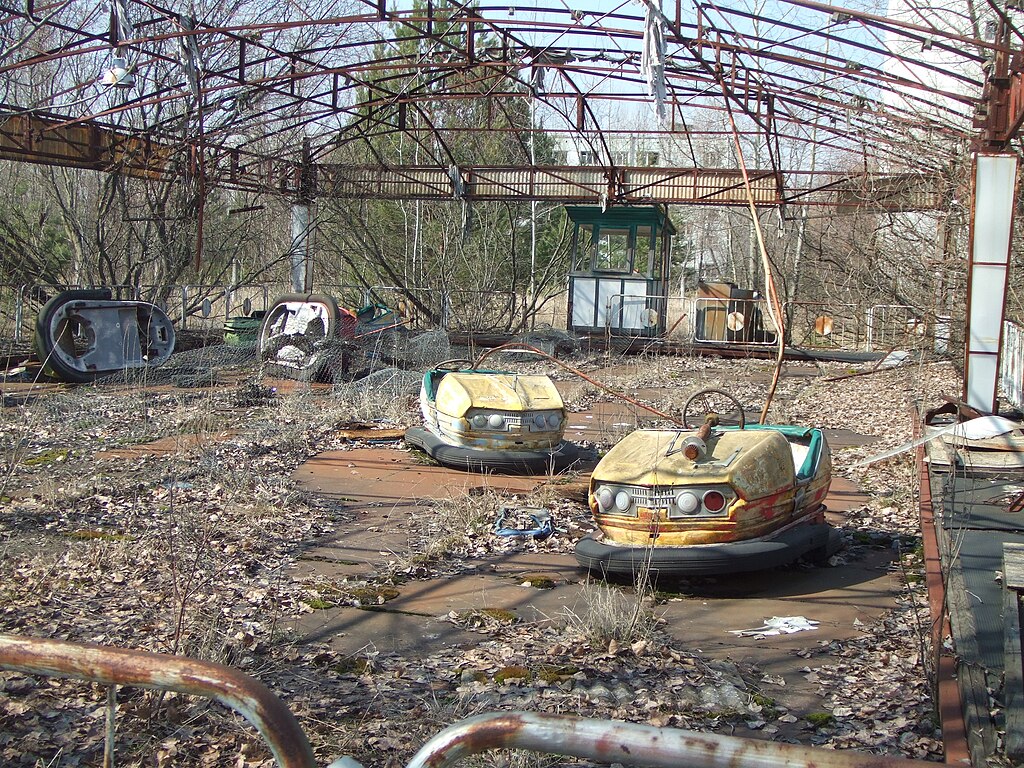 Justin Stahlman from Montréal, Canada, CC BY 2.0, Wikimedia Commons
Justin Stahlman from Montréal, Canada, CC BY 2.0, Wikimedia Commons
The Cultural Center Before
When Pripyat was still bustling with people, this cultural center by the main square would be one of the main attractions for visitors and residents alike. Sadly, it too would fall victim to the ravages of time.
The Cultural Center After
Just like the Hotel Polissya, the Pripyat cultural center is now a worn-out husk of what it once was, with no evidence of the gardening or other signs of human life it once had in front of it.
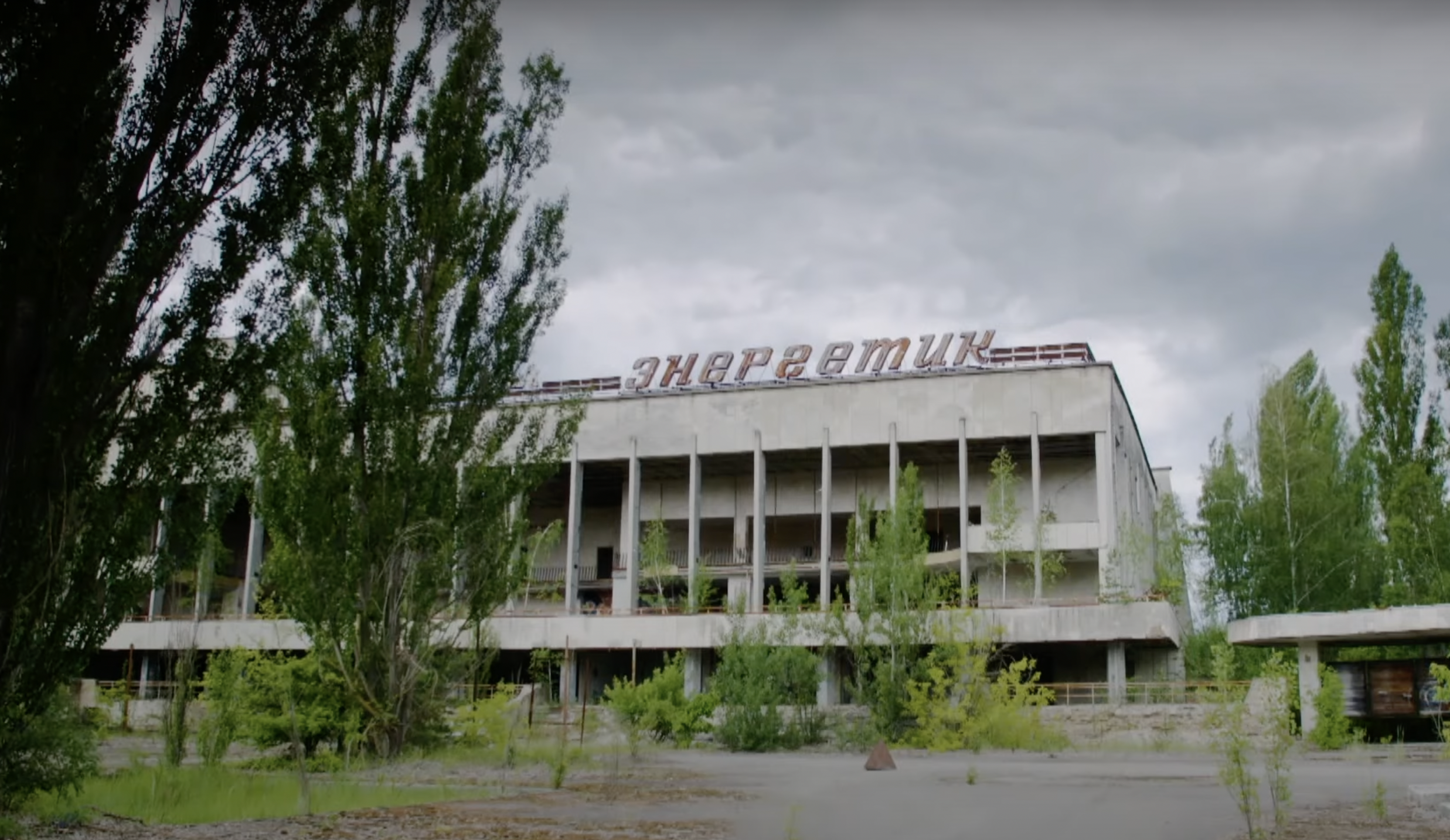 Chernobyl's Adjacent Ghost City: Pripyat, Science Channel
Chernobyl's Adjacent Ghost City: Pripyat, Science Channel
A Ferris Wheel In Pripyat
One of the other amusement attractions in Pripyat was the Ferris wheel, which did and still does take up much of the skyline in the area. Today, though, it's rusted out and falling apart.
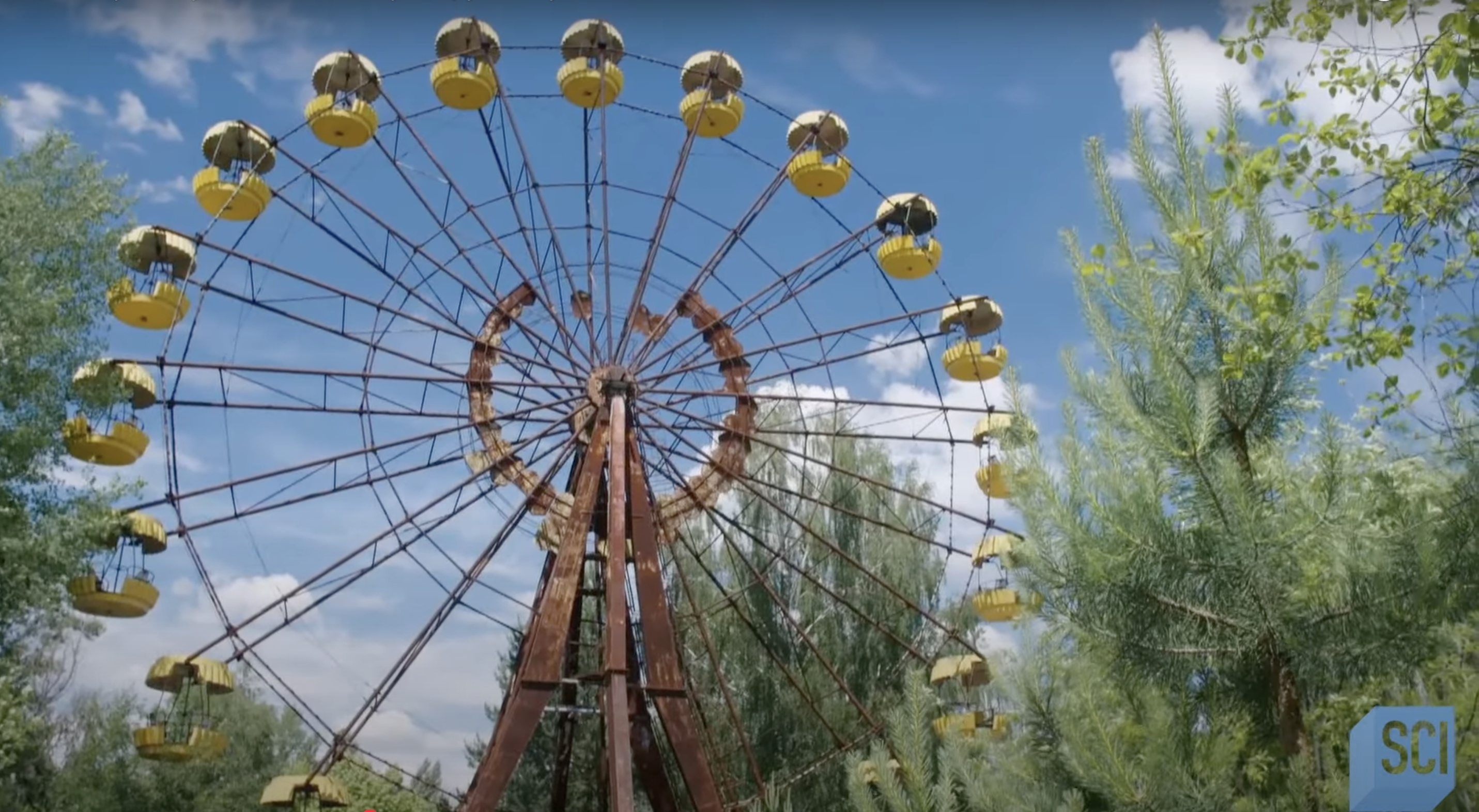 Chernobyl's Adjacent Ghost City: Pripyat, Science Channel
Chernobyl's Adjacent Ghost City: Pripyat, Science Channel
An Empty House
In another stark reminder of how quickly people needed to abandon their lives, a once-bright and fashionable upholstered chair in this house now lies amid ruins.
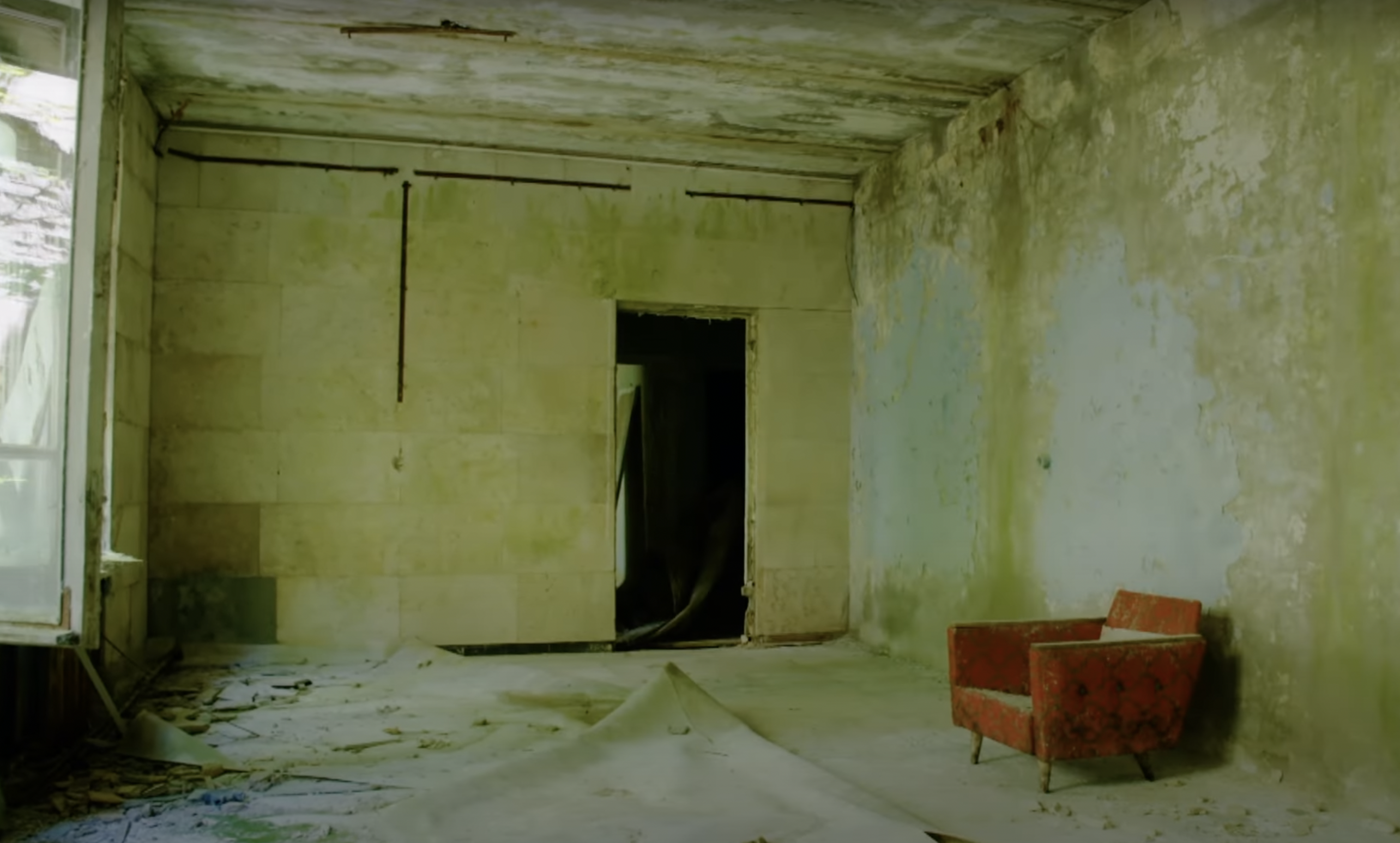 Chernobyl's Adjacent Ghost City: Pripyat, Science Channel
Chernobyl's Adjacent Ghost City: Pripyat, Science Channel
Peeling Paint Inside A Building
Paint jobs have been utterly destroyed near Chernobyl, both by the fallout of the disaster and by the march of time. In this room, the paint has almost all peeled away, and the floor is falling apart.
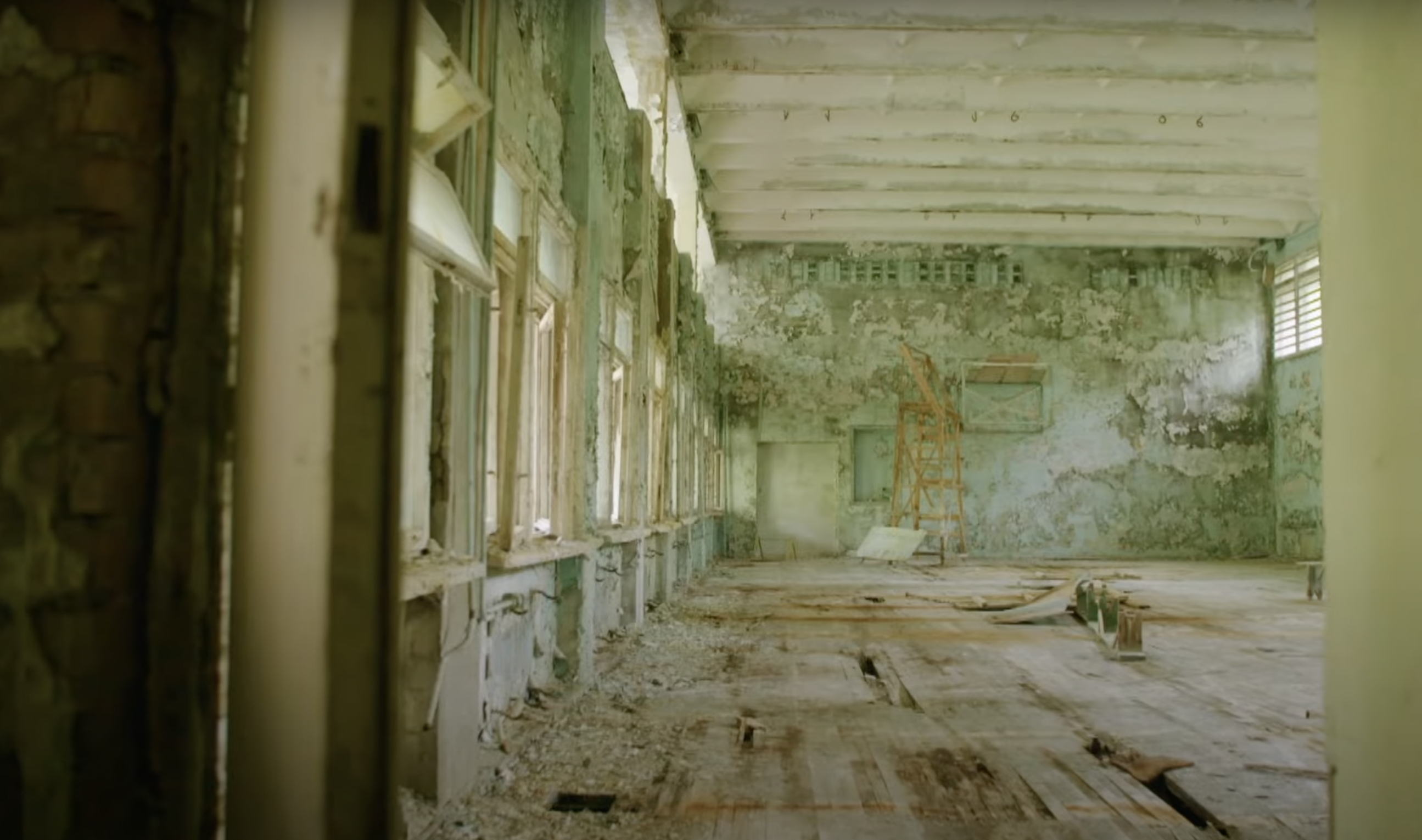 Chernobyl's Adjacent Ghost City: Pripyat, Science Channel
Chernobyl's Adjacent Ghost City: Pripyat, Science Channel
More Abandoned Houses
It's hard to look at the photos of these crumbling places—here, dust covers the floor and furniture lies in ruins—and think about people living in them and tending to them. But they very much did live there and take pride in their homes.
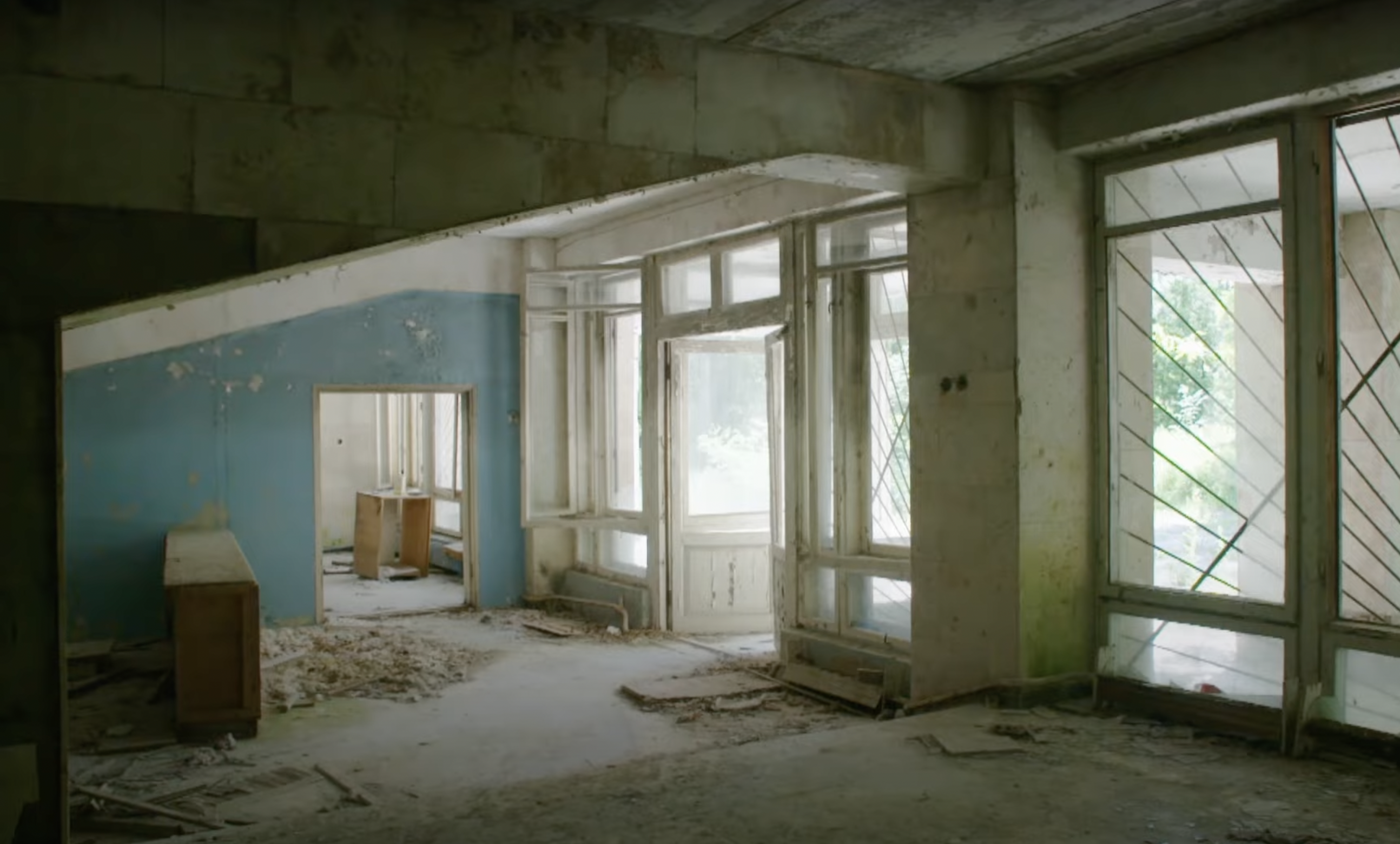 Chernobyl's Adjacent Ghost City: Pripyat, Science Channel
Chernobyl's Adjacent Ghost City: Pripyat, Science Channel
A Stopped Clock
A stopped clock stands on a crumbling wall in Pripyat. More than that, its numbers have faded into nothing. With no one in town to upkeep anything, the clock stands still while everything crumbles around it.
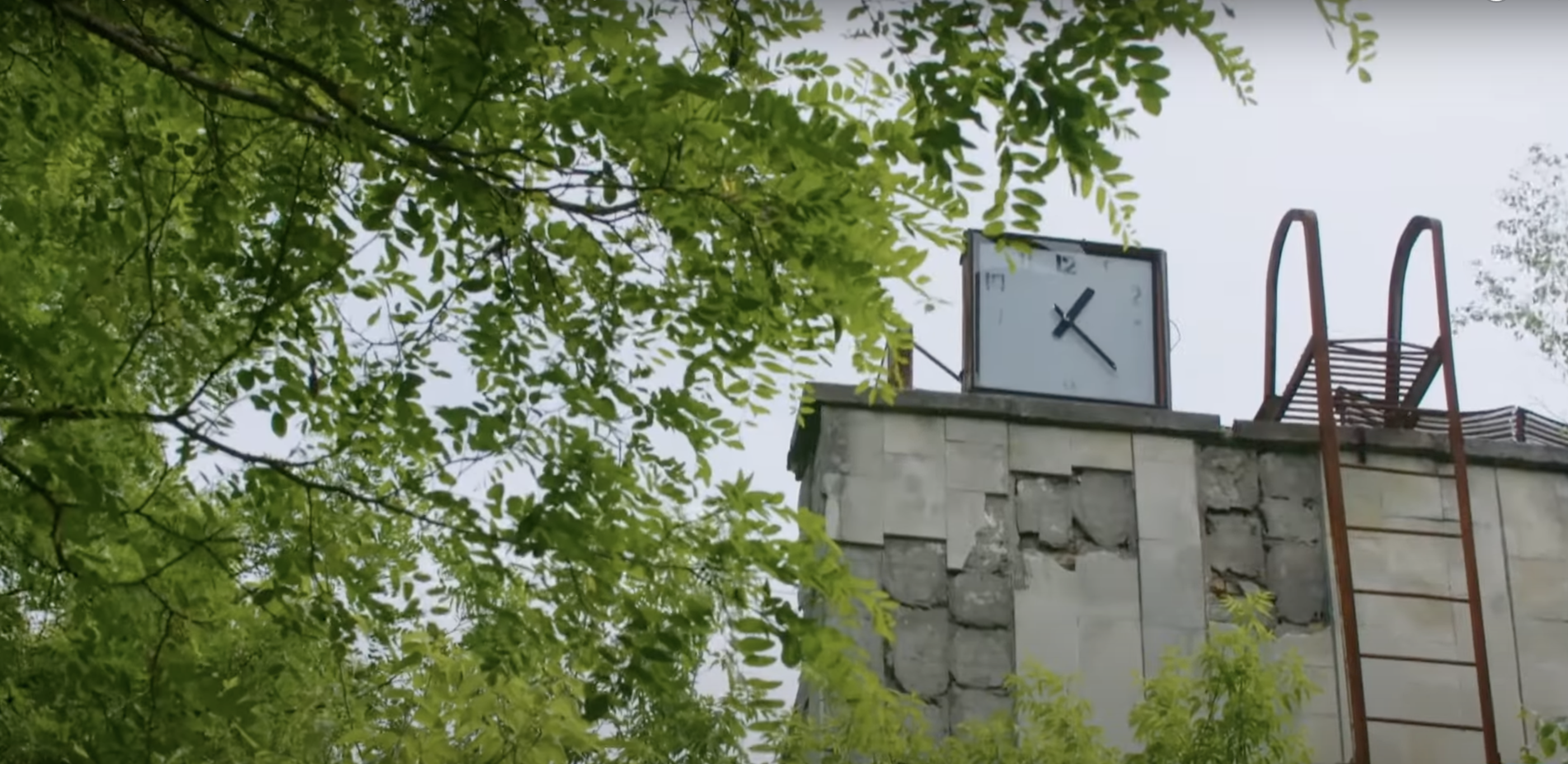 Chernobyl's Adjacent Ghost City: Pripyat, Science Channel
Chernobyl's Adjacent Ghost City: Pripyat, Science Channel
The Community Swimming Pool
The Pripyat neighborhood swimming pool would have once been a place where people would gather on evenings and weekends for a dip. Now, the pool is drained and the ceiling has fallen in.
 Chernobyl's Adjacent Ghost City: Pripyat, Science Channel
Chernobyl's Adjacent Ghost City: Pripyat, Science Channel
The Community Swimming Pool (Cont'd)
Another angle of the swimming pool in Pripyat shows even more devastation of the building. Rusted railings, peeling pain, and rotting wood abound.
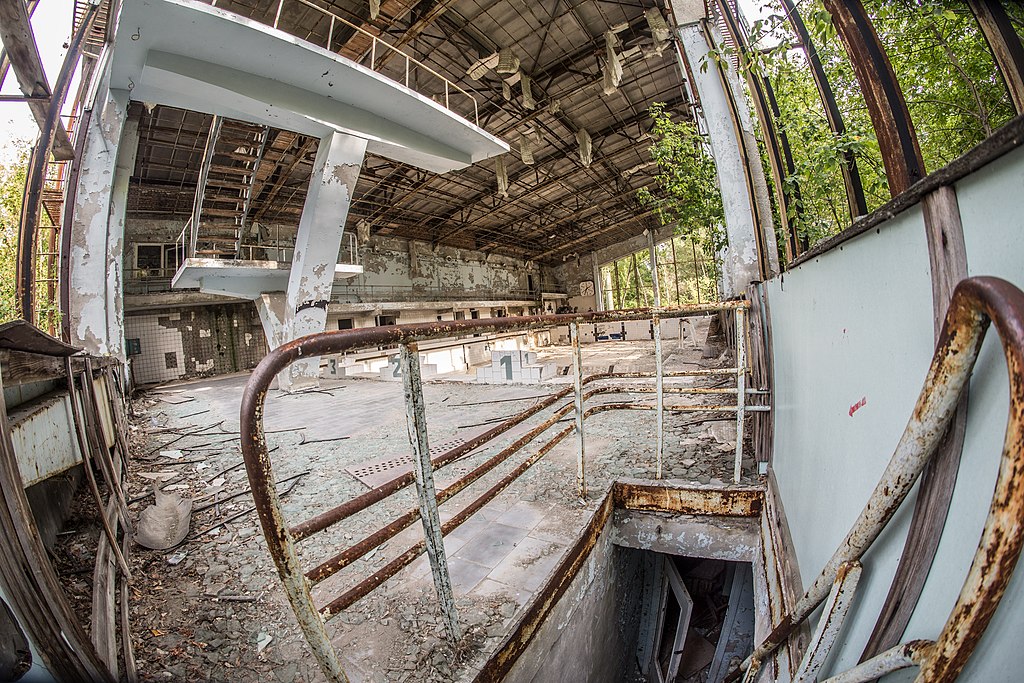 Wendelin Jacober, CC0, Wikimedia Commons
Wendelin Jacober, CC0, Wikimedia Commons
A Music Room
This Pripyat music room still has vestiges of its past. Amid the rubble, you can also see the acoustic system on the ceiling, as well as a broken down piano on the stage.
A Gas Mask On The Floor
The areas around Chernobyl and Pripyat are littered with gas masks, mostly used by the people coming in after the disaster to help or study it. This one lies in the rubble of Pripyat.
Hospital Chair Sitting Outside
This 2024 photo shows the devastation that is still ongoing in the Chernobyl exclusion area. Here, a medical examination chair lies outside, stripped of paint and covered in rust.
An Abandoned Post Office Box
Since no one lives in Pripyat now, the post office box is also long abandoned. Behind it are the shuttered and blown windows of an empty apartment building.
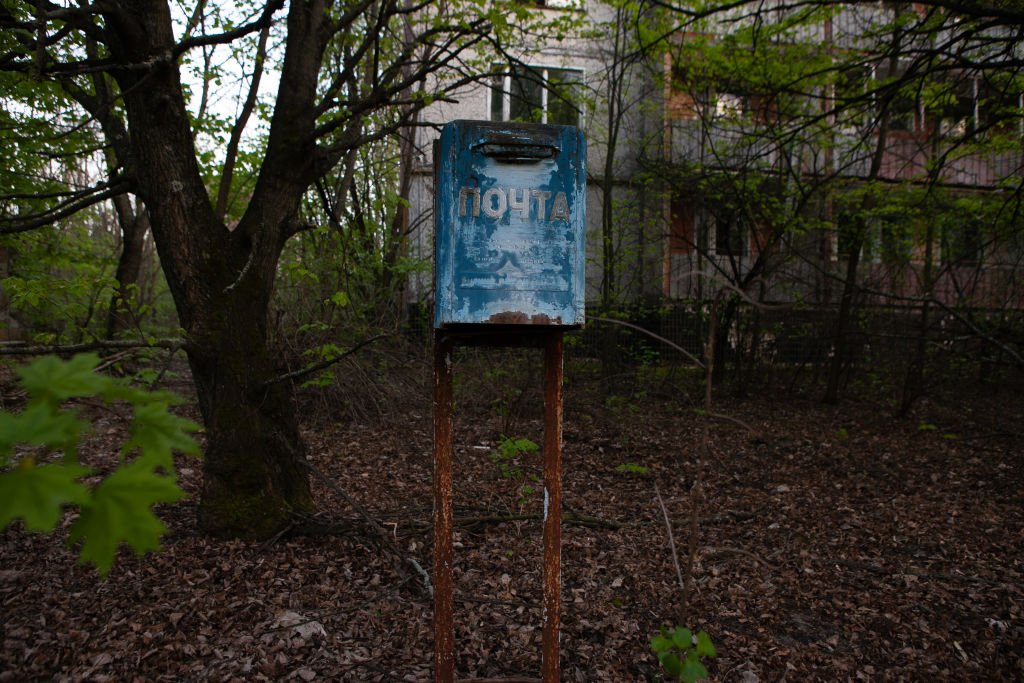 Global Images Ukraine, Getty Images
Global Images Ukraine, Getty Images
A Sports Stadium
From the swimming pool, to the bumper cars, to the Ferris wheel and main square, what's left of Pripyat shows the ghost of a busy, happy town. The same goes for this sports stadium, whose bleachers now look out to nothing.
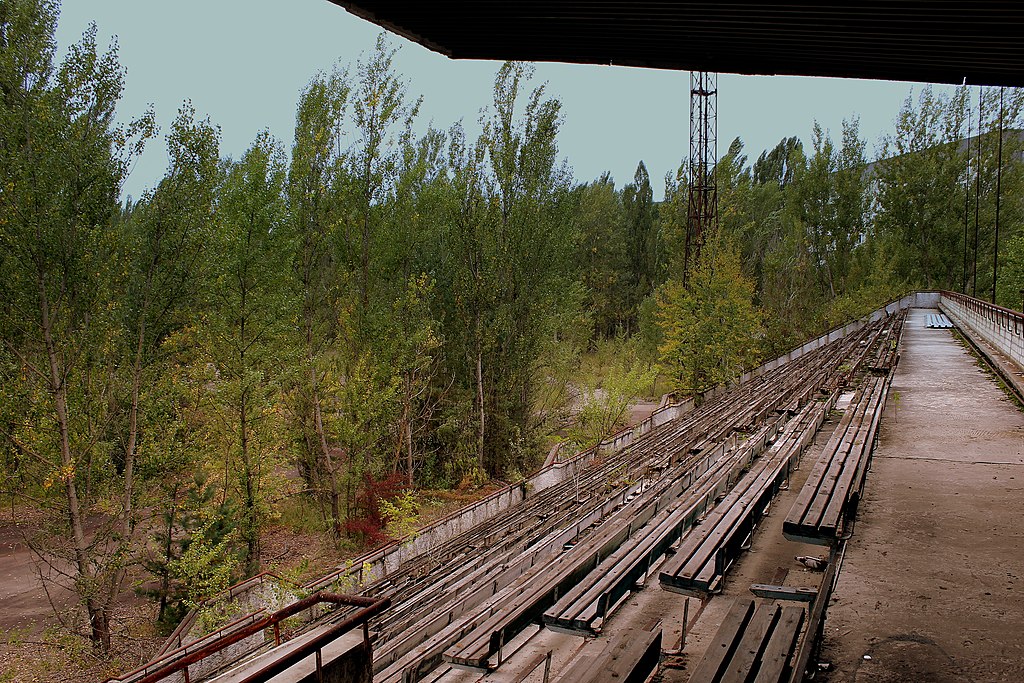 calflier001, CC BY-SA 2.0, Wikimedia Commons
calflier001, CC BY-SA 2.0, Wikimedia Commons
An Empty Pier
Pripyat once also had a picturesque pier to walk along on sunny days. Now its structures have fallen into disrepair and rust.
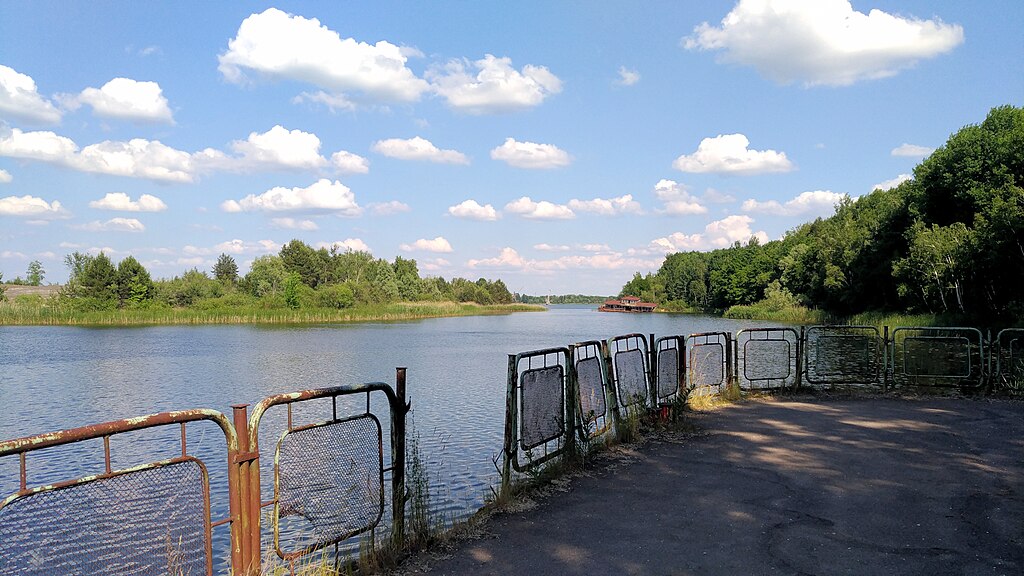 Michal Bělka, CC BY-SA 4.0, Wikimedia Commons
Michal Bělka, CC BY-SA 4.0, Wikimedia Commons
The Chernobyl Plant Torch
The Chernobyl Nuclear Plant had its own structure—a torch that stands outside the Pripyat junction near to the Red Forest. The Red Forest, too, has its own story.
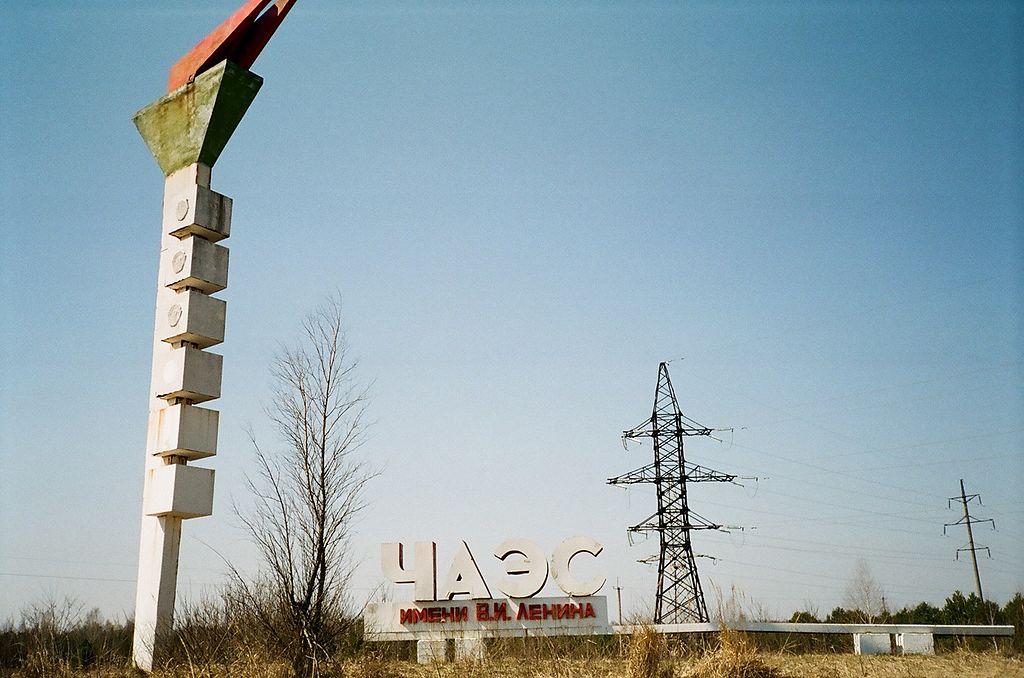 Gyurika at Hungarian Wikipedia, CC BY-SA 3.0, Wikimedia Commons
Gyurika at Hungarian Wikipedia, CC BY-SA 3.0, Wikimedia Commons
The Infamous Red Forest
The "Red Forest" was born in the aftermath of the Chernobyl disaster. After breathing in the sickening radiation from the explosion, the trees in the exclusion zone turned bright red—and then shortly after, died.
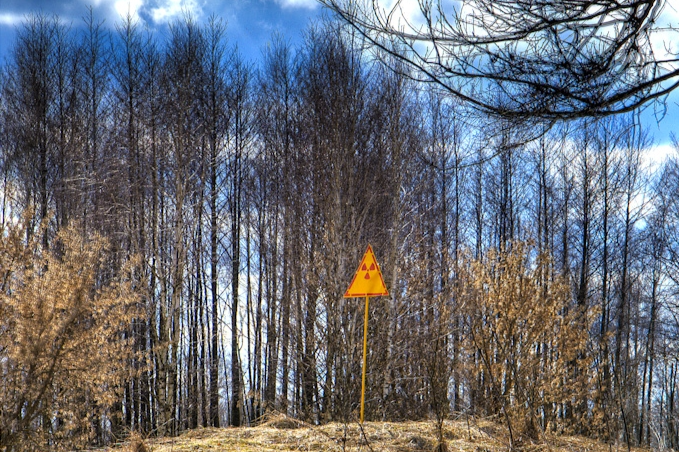 Timm Suess, CC BY-SA 2.0, Wikimedia Commons
Timm Suess, CC BY-SA 2.0, Wikimedia Commons
A Small Abandoned House
Everywhere you look in Pripyat are abandoned houses. This one is modest and much smaller than the massive residential buildings, but packs just the same tragic punch.
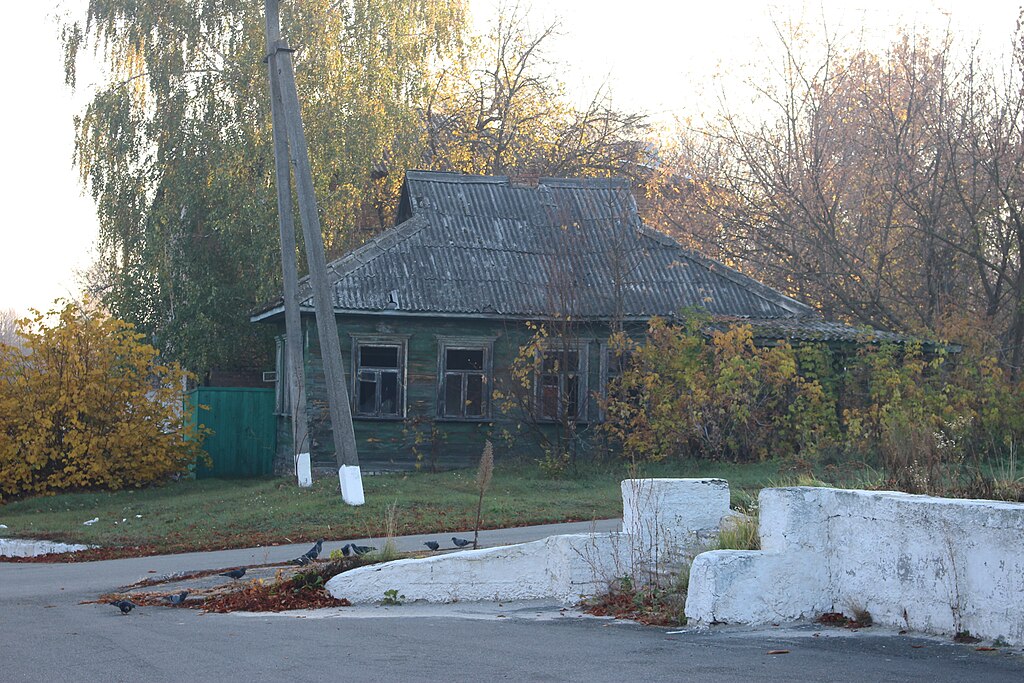 ArticCynda, CC BY-SA 4.0, Wikimedia Commons
ArticCynda, CC BY-SA 4.0, Wikimedia Commons
Tourism Sign On The Side Of The Road
Along the road around Chernobyl and Pripyat, a now under-used tourism sign gives directions to the sites in the area.
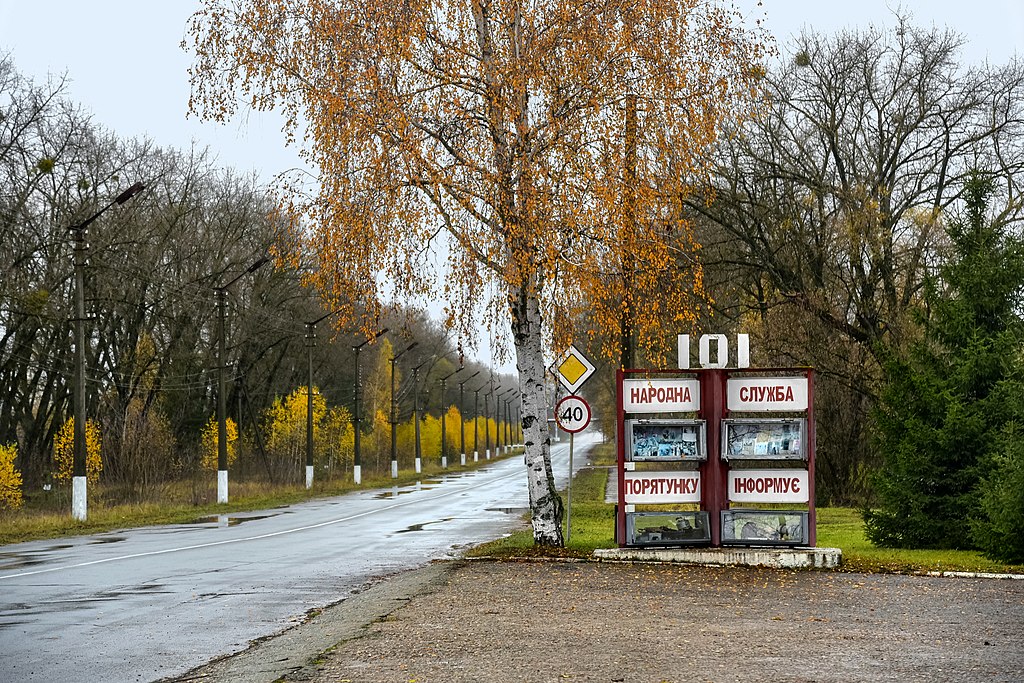 Jorge Franganillo from Barcelona, Spain, CC BY 2.0, Wikimedia Commons
Jorge Franganillo from Barcelona, Spain, CC BY 2.0, Wikimedia Commons
The Chernobyl Central Fountain
This fountain in a Chernobyl square is now full only of murky water. According to reports, firefighters working on the Chernobyl fire bathed here.
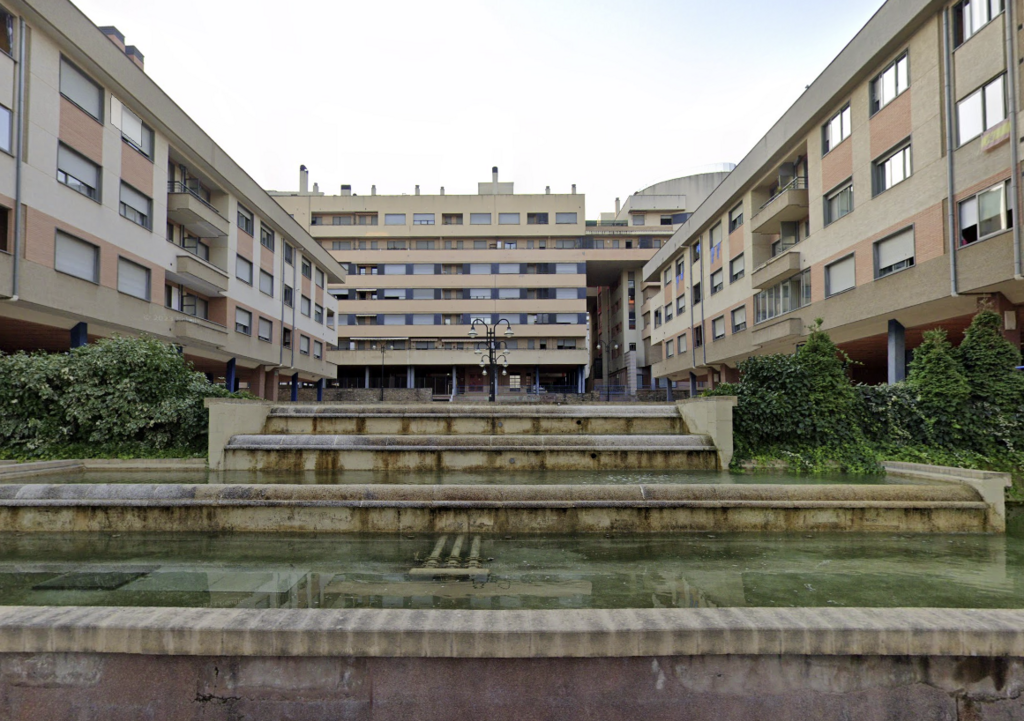 Elilitzz, CC0, Wikimedia Commons
Elilitzz, CC0, Wikimedia Commons
An Old Bus
This old, empty bus is one of the more photographed sites around the Chernobyl exclusion zone. In the 40 years it's been standing there, it's been almost completely stripped down and its metal is rusting away.
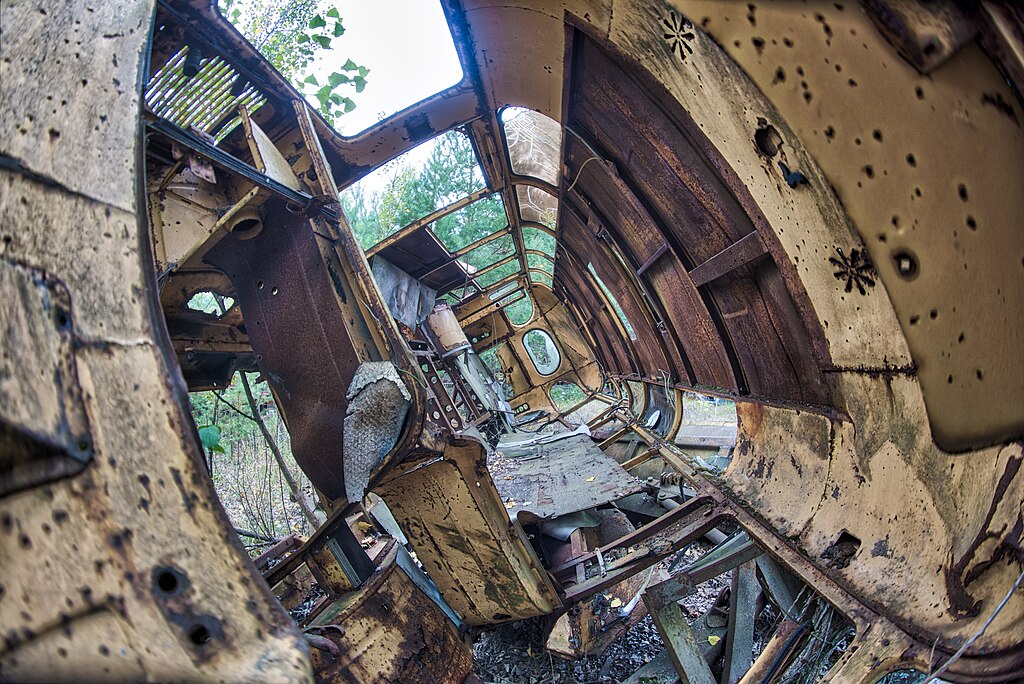 Wendelin Jacober, CC0, Wikimedia Commons
Wendelin Jacober, CC0, Wikimedia Commons
The Chernobyl City Limits
This photo shows the city limits sign of Chernobyl, which is the writing you see in Cyrillic along the sign. The area is desolate and mostly uninhabited.
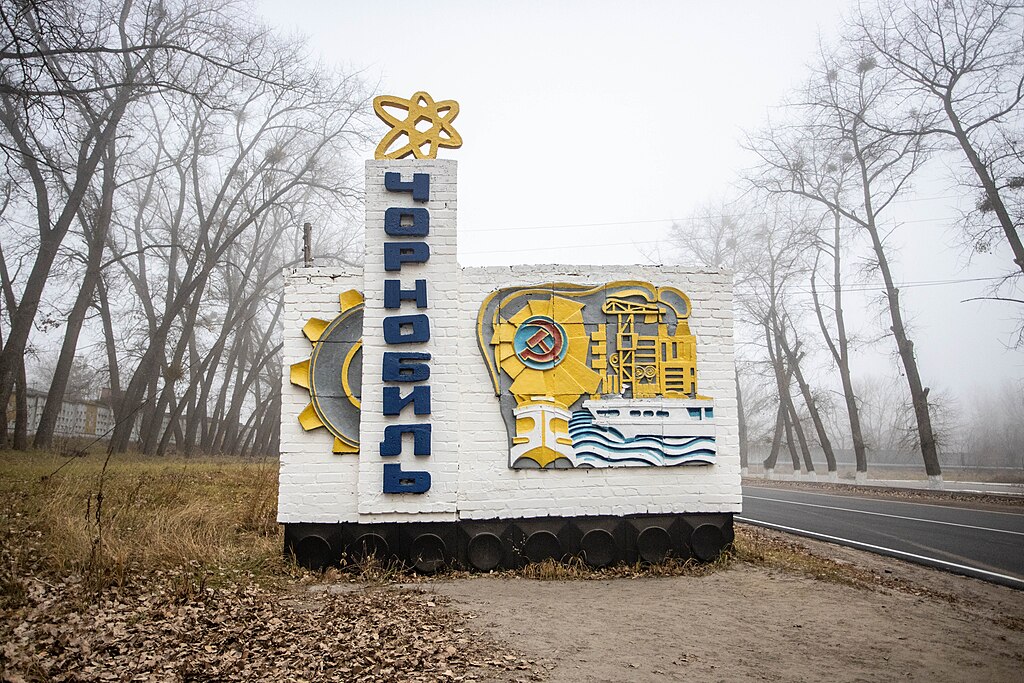 XEvansGambitx, CC BY-SA 4.0, Wikimedia Commons
XEvansGambitx, CC BY-SA 4.0, Wikimedia Commons
The Chernobyl Access Gate
The Chernobyl access gate is now likely more important for keeping people out than it ever was before. There are some tourist buses and security cars around.
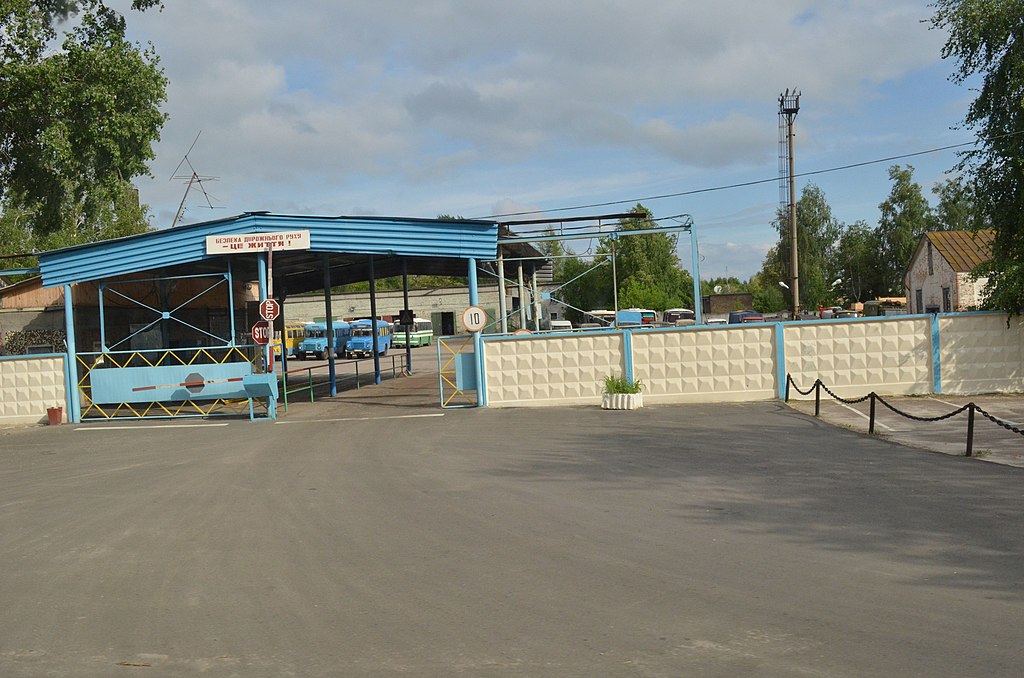 Antanana, CC BY-SA 3.0, Wikimedia Commons
Antanana, CC BY-SA 3.0, Wikimedia Commons
The Pripyat City Limits
Because it's not at the center of Chernobyl tourism, the city of Pripyat is even more ghostly than the nuclear plant's area. This is the city limits sign for Pripyat.
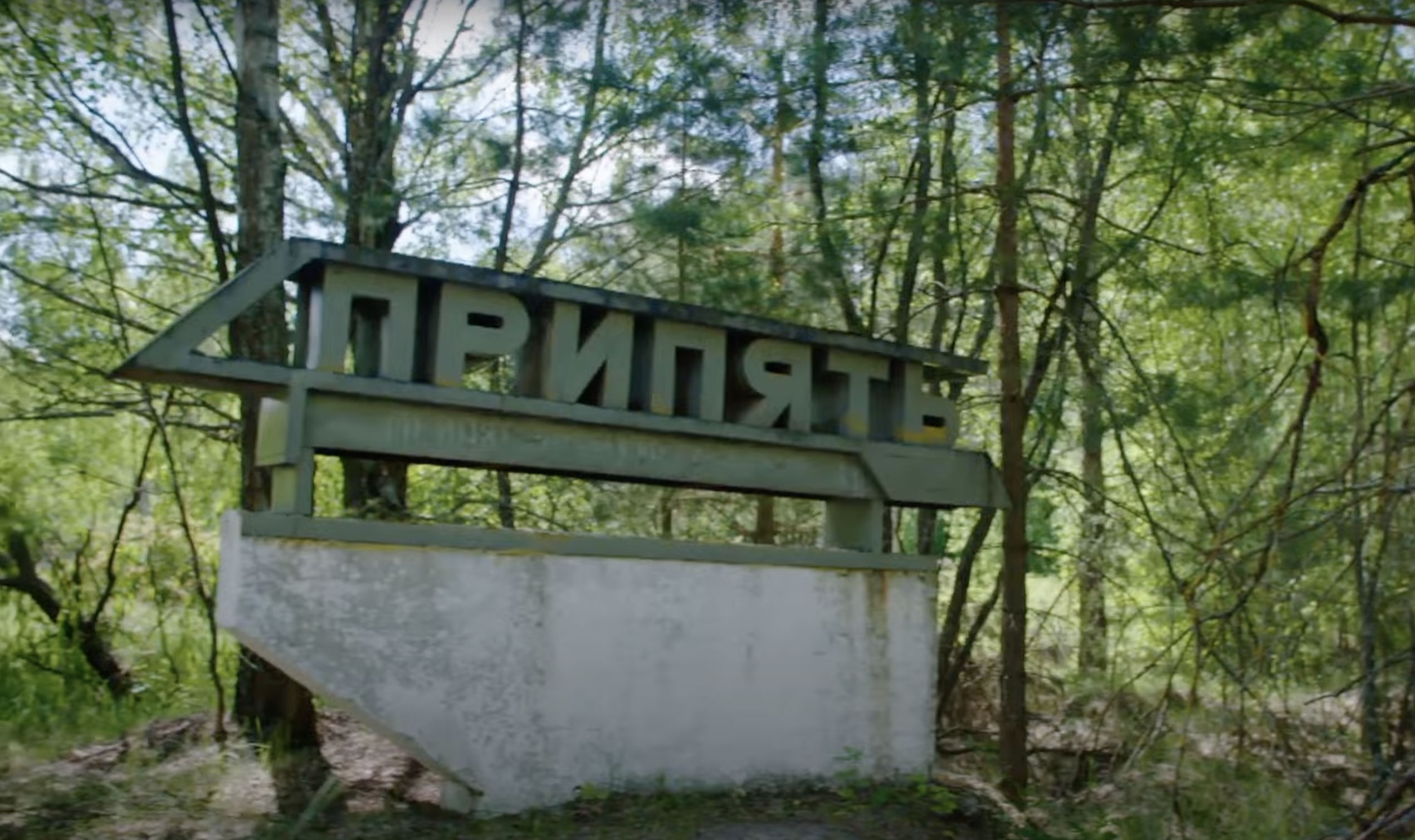 Chernobyl's Adjacent Ghost City: Pripyat, Science Channel
Chernobyl's Adjacent Ghost City: Pripyat, Science Channel
Scientific Investigators Pose For A Photo
For all the destruction of Chernobyl and Pripyat, the tourism there shows that people have not completely forgotten the exclusion zone. Scientists also fought for understanding: They stand here at a checkpoint into Pripyat in 2000, almost 15 years after the disaster.
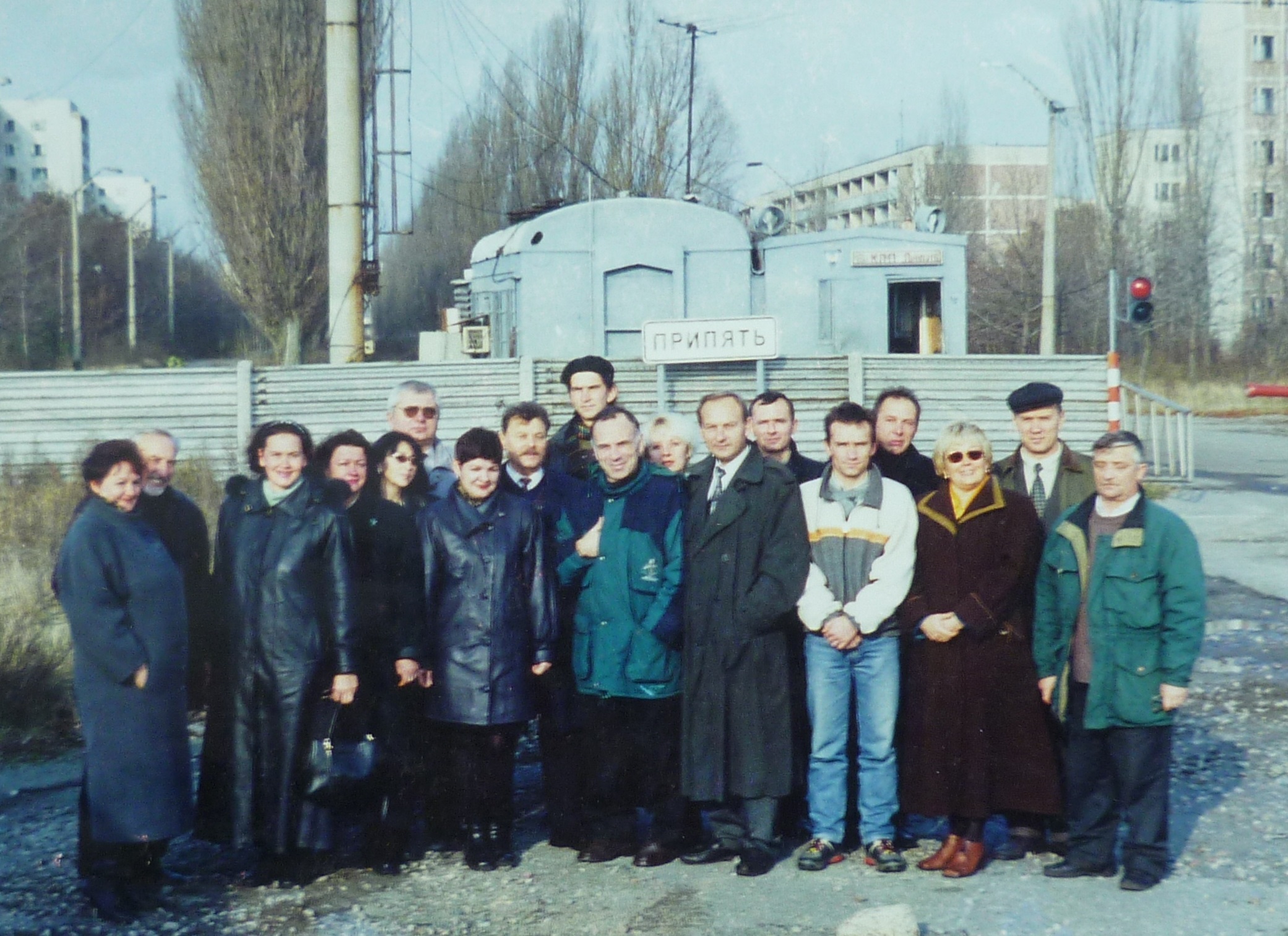 BoratM, CC BY 4.0, Wikimedia Commons
BoratM, CC BY 4.0, Wikimedia Commons
Pripyat: Who Is Left
Today, with Pripyat's population still at zero, some of the only living things left in the area are the wild animals and stray dogs, who wander freely amid the radiation—even near the Ferris wheel.
Pripyat: Who Is Left (Cont'd)
Another photograph shows this wild dog near the main square in Pripyat, looking out on its abandoned domain. It's unlikely the city will ever be resettled.
Tourists Can Bear Witness
Almost 40 years have passed since the explosion, and Chernobyl is only now becoming semi-visitable, and only for short periods of time. Tourism has popped up around the area, with people able to take footage of the devastation and the cities frozen in disaster.
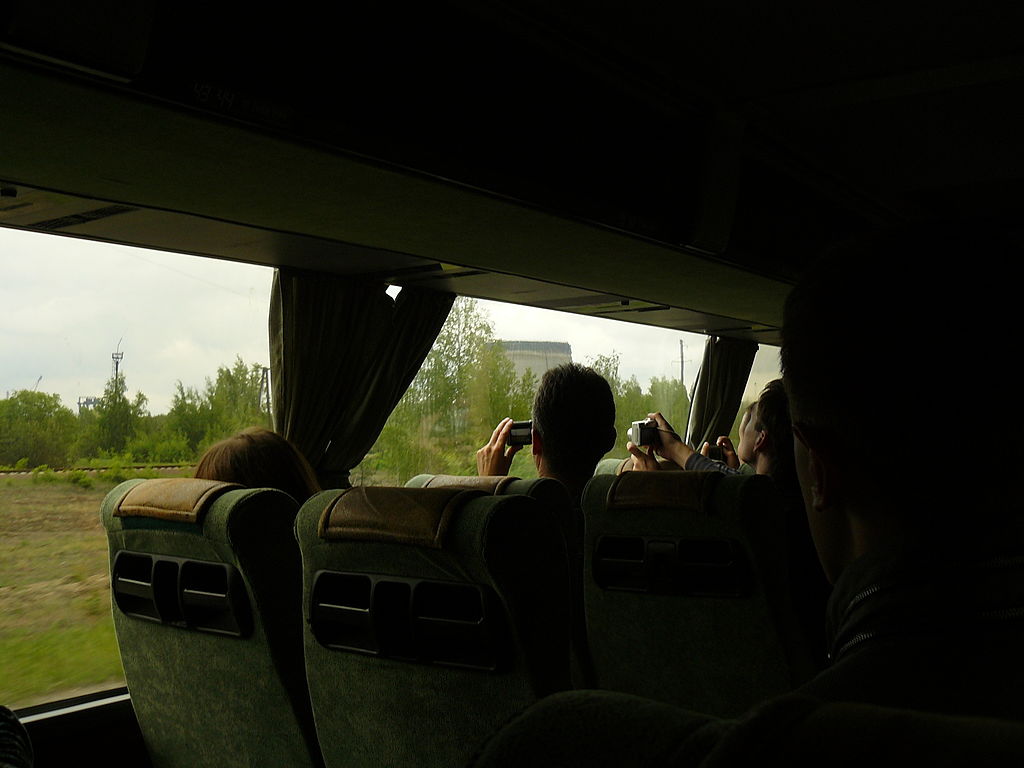 Jbuket, CC BY-SA 3.0, Wikimedia Commons
Jbuket, CC BY-SA 3.0, Wikimedia Commons
Final Thoughts
The Chernobyl disaster was one of the most devastating events in human history, and it's no wonder it still looms large in our consciousness—and guilty consciences—today. The abandoned buildings and monuments of Chernobyl and Pripyat are a testament to the scars of this history.
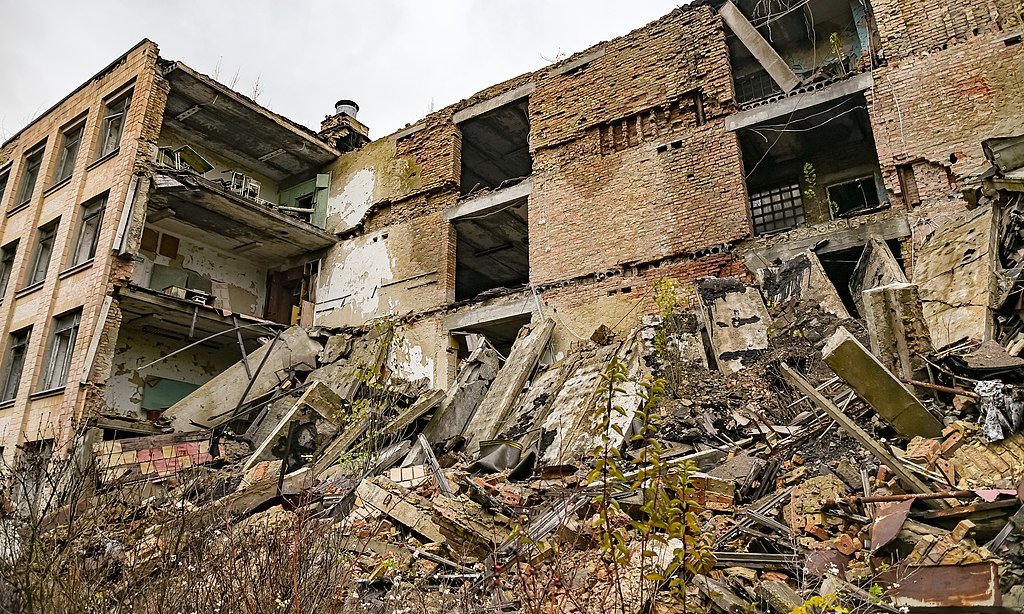 Jorge Franganillo, CC BY 2.0, Wikimedia Commons
Jorge Franganillo, CC BY 2.0, Wikimedia Commons

